Concerned About Chemical Leaching? I Tested the Best Non-Toxic Cookware That Won’t Flake on You
I've tested one hundred pans; these are the most reliable brands to invest in
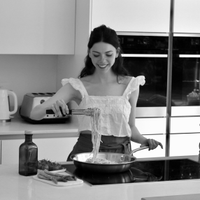
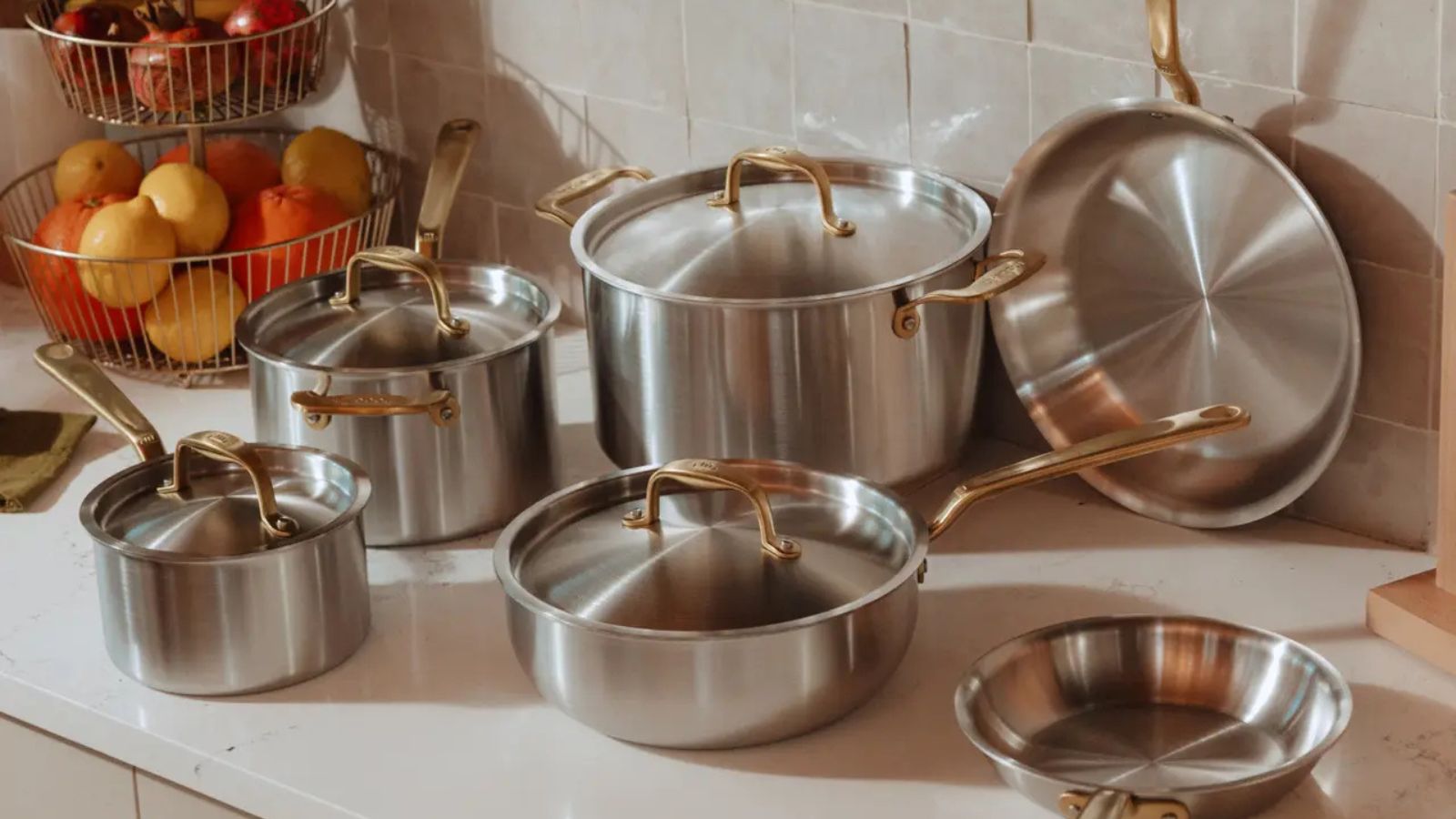
- The quick list
- Best stainless steel
- Best cast iron
- Best ceramic non-stick
- Budget skillet
- Best hybrid
- Best titanium / dishwasher-safe
- Best enameled cast iron
- Best copper / luxury pick
- Most versatile
- Best Non-Toxic Cookware Sets
- How to Choose the Best Non-Toxic Cookware
- How I tested
- Meet the Tester
- Meet the Experts
- FAQs
If you’re worried about ‘Teflon flu’ and have been wanting to ditch your flaky non-stick pans for the best non-toxic cookware, you’re not alone. I’ve been down that road, too. As a health-focused cook and appliances editor, I’ve spent years researching the best non-toxic kitchen appliances – combining hands-on experience in the test kitchen with guidance from medical experts and toxicologists.
Many cookware products have non-stick coatings that may contain PFAS (forever chemicals). This makes them cheap to buy, grease-resistant, and easy to clean, but when scratched or overheated, these coatings can release harmful toxins into the air and your food, and cause major health issues. Expert, Dr. Bruce Jarnot (board-certified toxicologist and materials compliance expert) says, ‘To eliminate PFAS exposure risks in the kitchen, consumers should switch out their non-stick frying pans.’
The pans may require a little more care and technique, but they give back generously: better cooking results, durability, and, above all, peace of mind.
The Quick List
If you can't wait to get cooking, this is the best non-toxic cookware. You'll find more in-depth reviews on each pan further down the page, as well as my advice on how to choose the right cookware material for your needs and lifestyle.
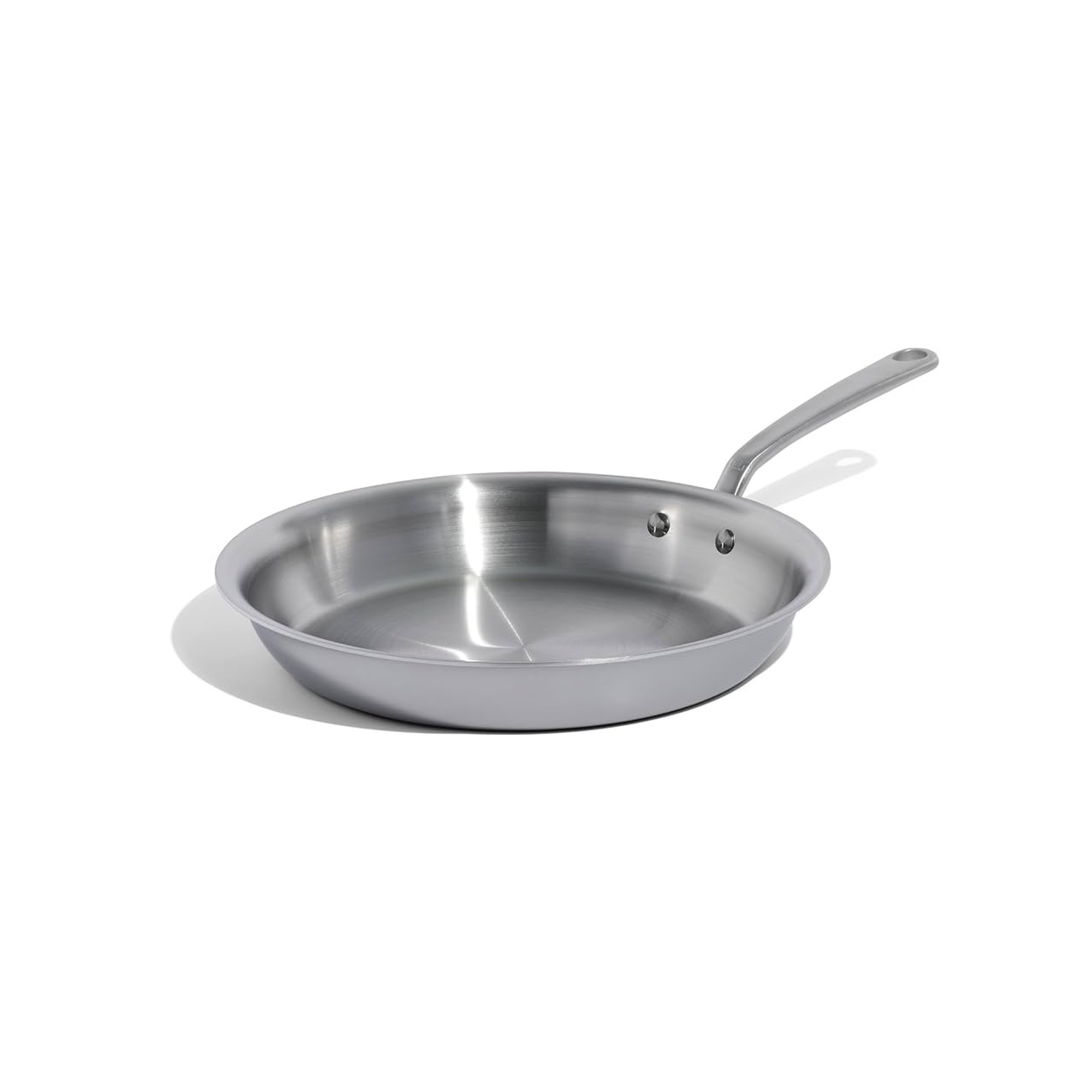
Best for everyday searing. A favorite among professional chefs, the Made In pan delivers excellent value. It heats evenly, resists scratching and leaching, and produces a perfect, golden sear every time.

I love the smooth surface on this vintage-style skillet. Frittatas and pancakes slid out perfectly in testing. Made from sturdy cast iron, it’s built to last a lifetime – it just needs regular seasoning for a naturally non-stick finish.
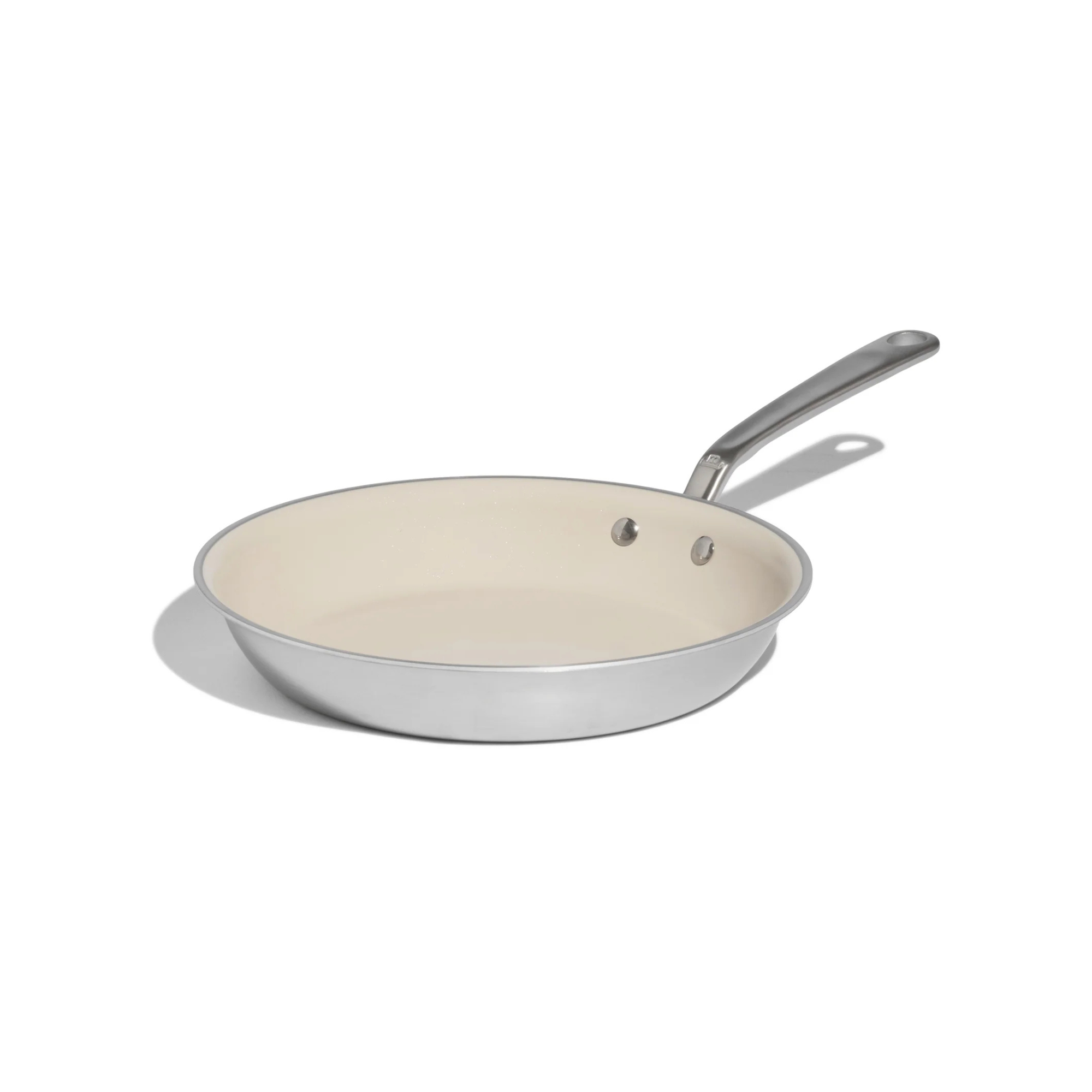
Best for eggs and delicate ingredients, Made In's ceramic is superior to any other brand. It is robust and seriously slippery, but you still need to take care not to chip or damage the coating.
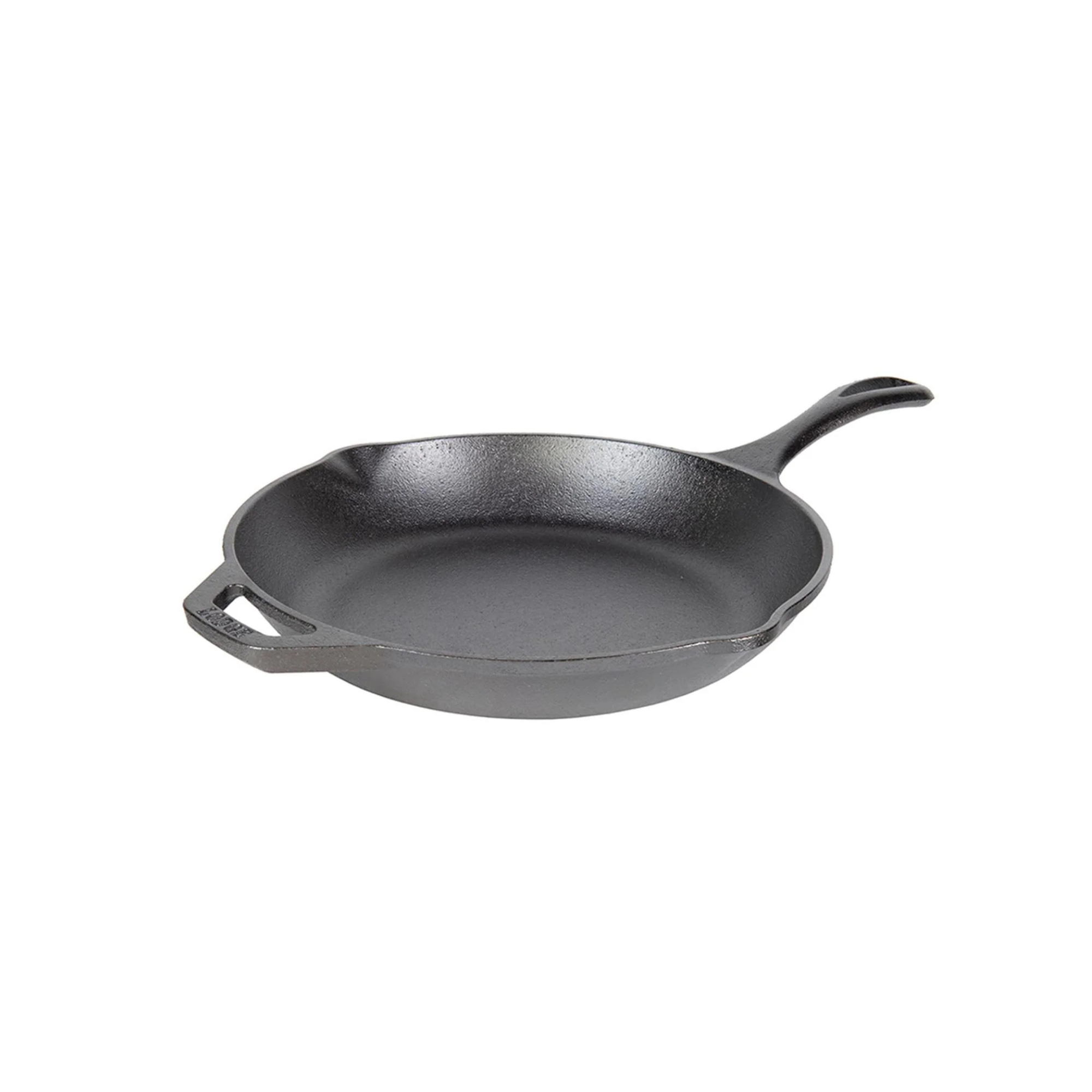
Lodge has been a trusted name in cast iron cookware since 1896, proudly made in Tennessee. It may not be the smoothest or most stylish option, but it delivers reliable durability and performance – all for under $40.
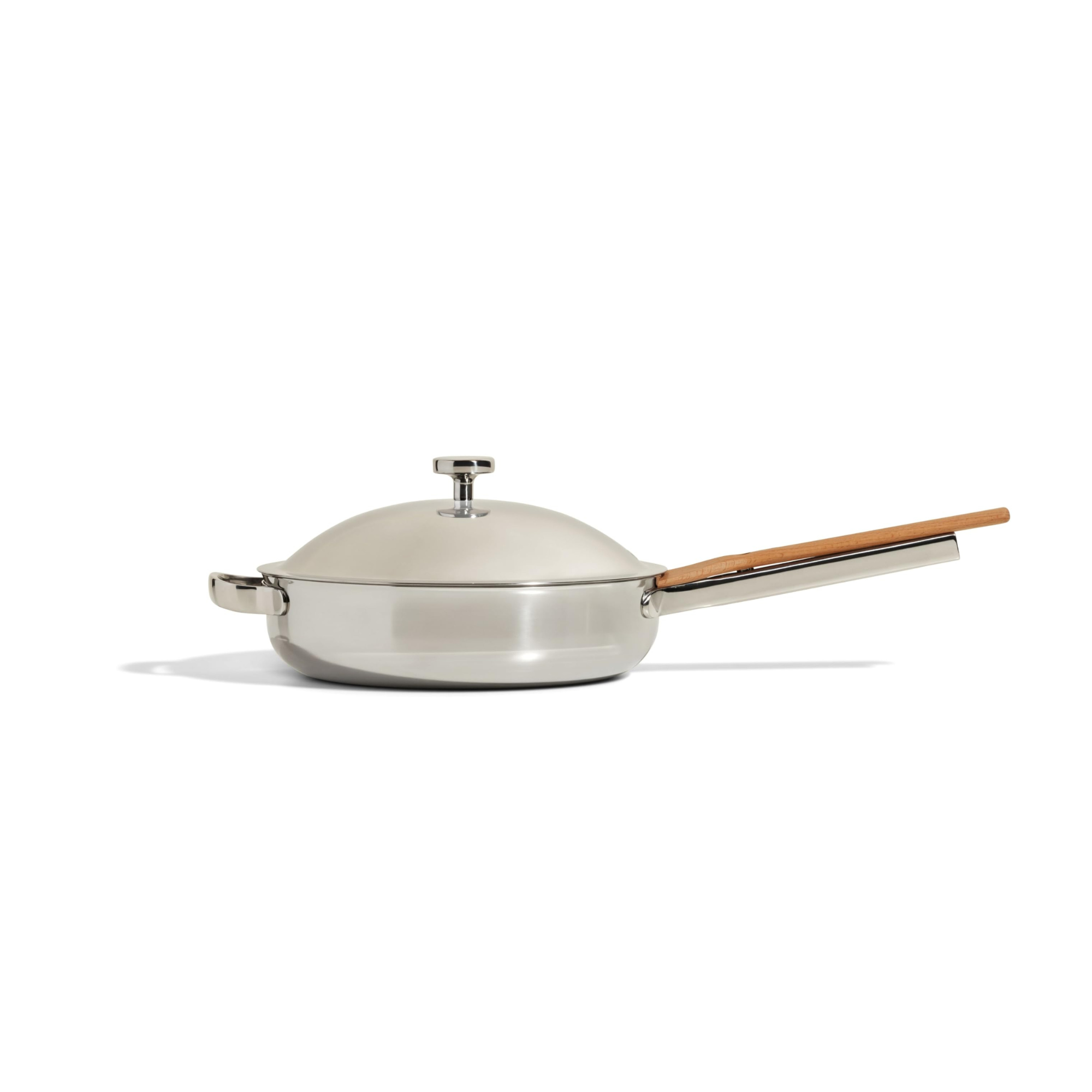
This pan is pretty and practical. The unique 'no-coating' Titanium design is dishwasher-safe (a huge win), and food still sizzles effortlessly on the grooved surface. However, it is heavy.
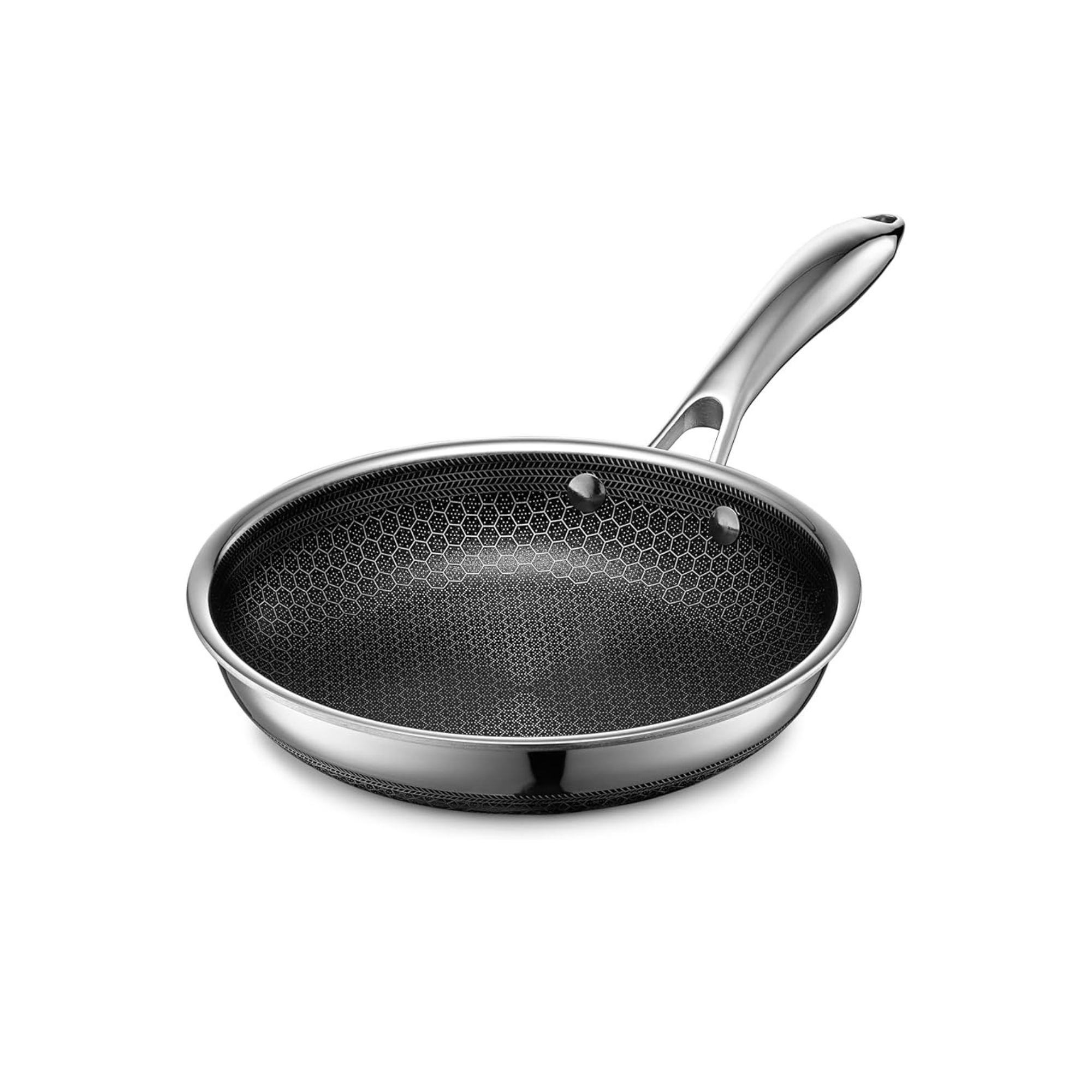
HexClad’s surface blends stainless steel peaks with a ceramic non-stick base. Third-party testing confirms it’s PFAS-free, which is good news, as the exceptional non-stick performance makes cooking – and cleanup – effortless.
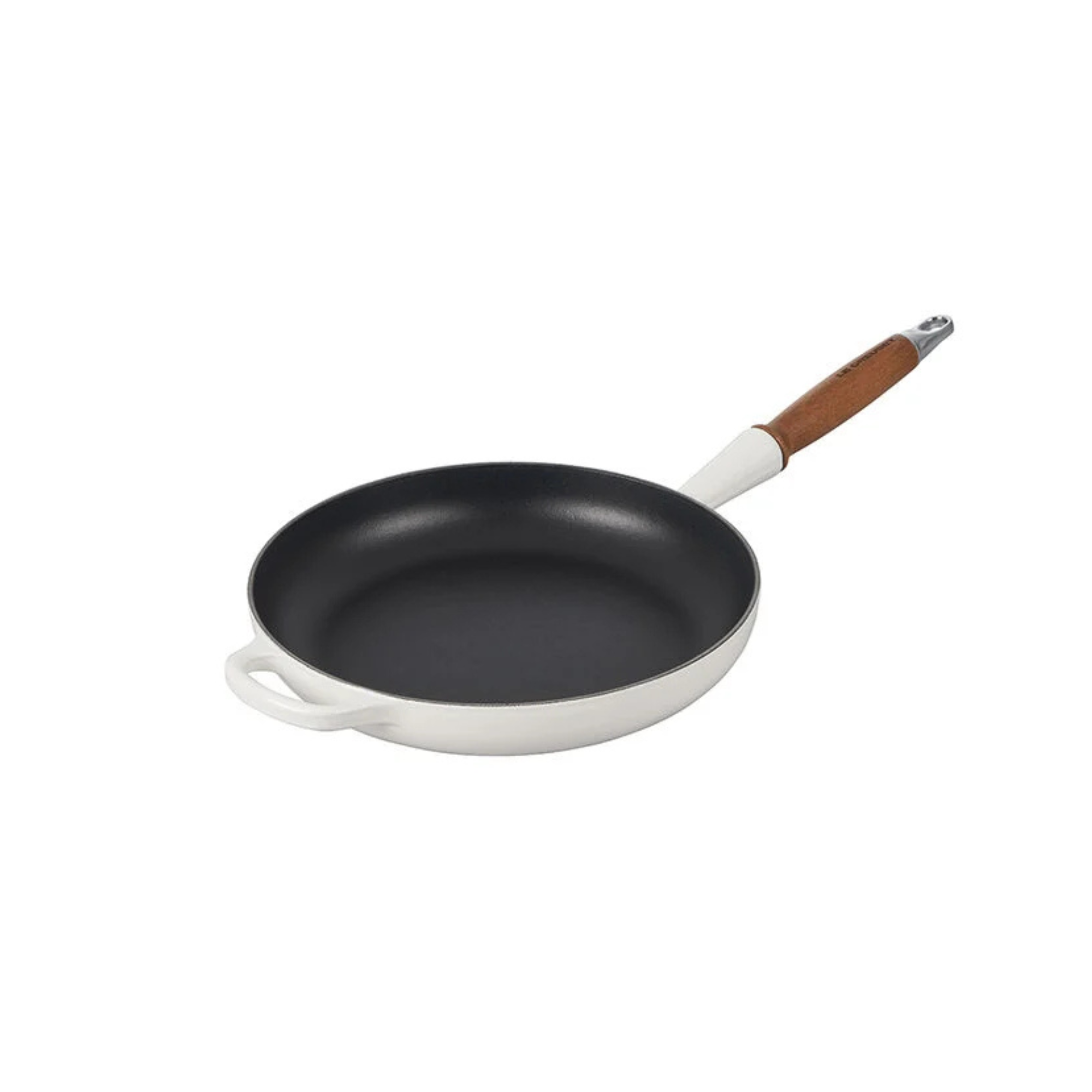
I have a soft spot for this Le Creuset pan. It's big and beautiful, with a black satin enamel interior that is free from PFAS, resists stains, and doesn't need seasoning.
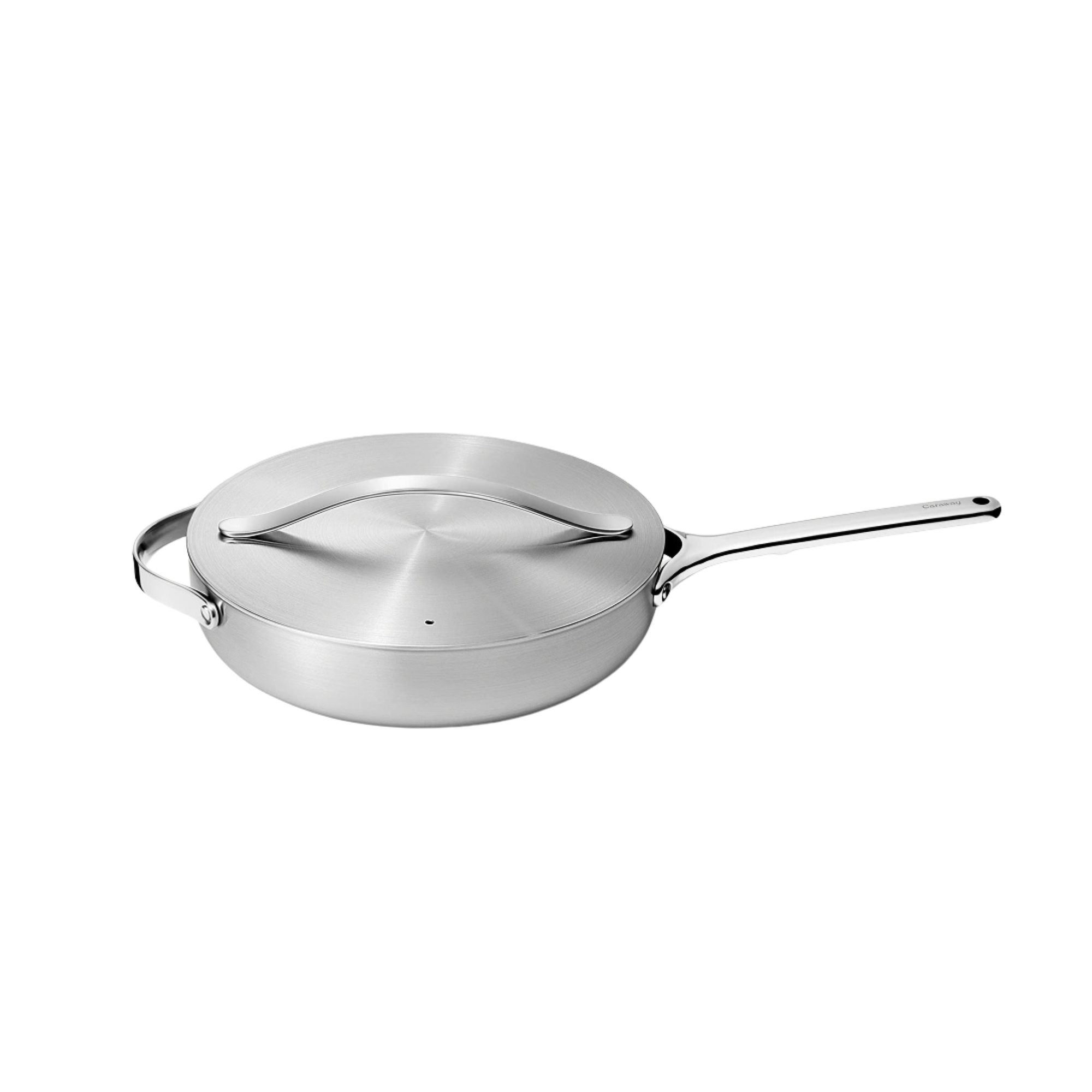
Best for versatile cooks, Caraway’s stainless steel pan can handle any recipe, from pastas and curries to oven-baked casseroles. I’d choose this classy design over their non-stick every time.
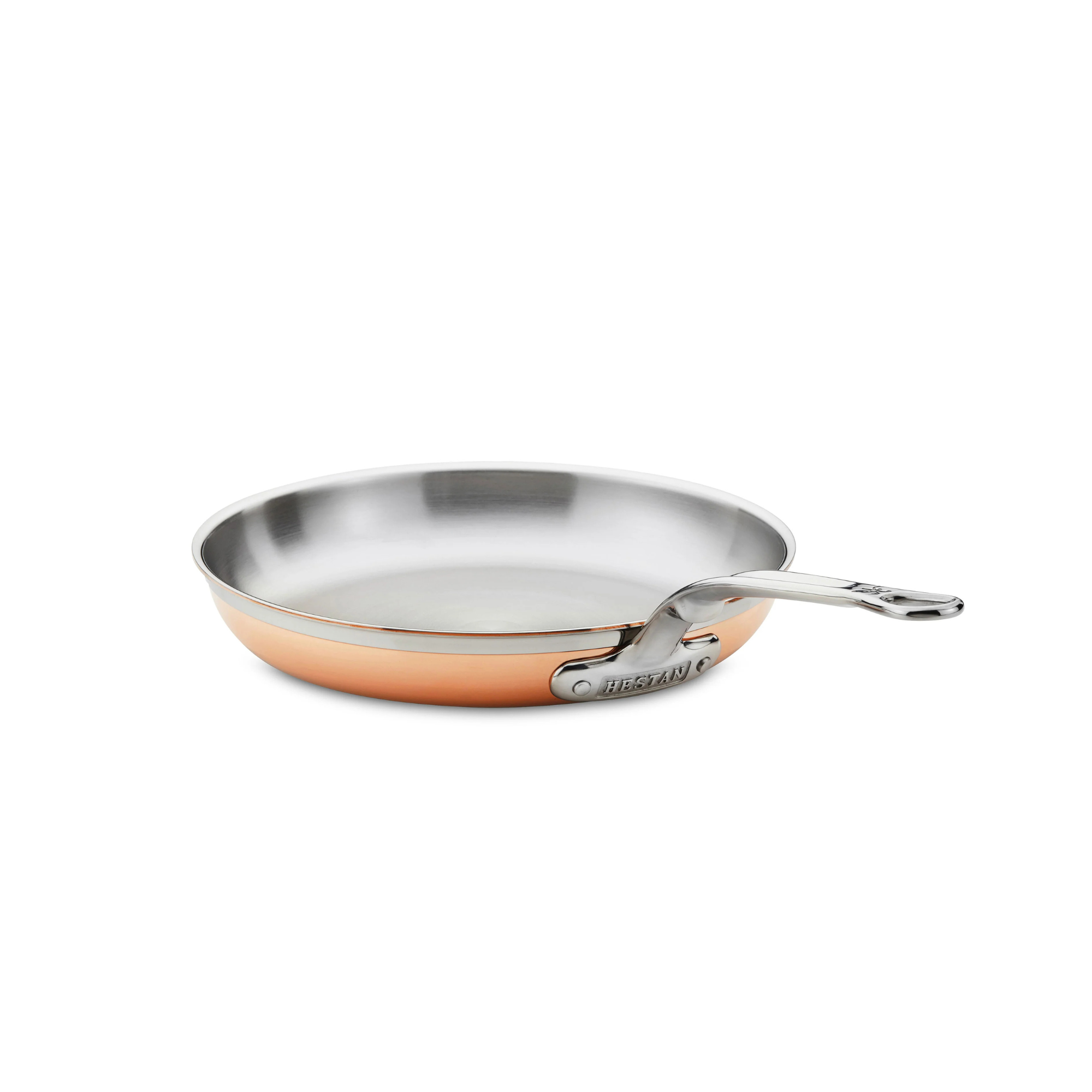
Copper heats quickly and evenly, making it a favorite among top chefs for precise searing and sauce-making. This Hestan pan features a safe stainless steel cooking surface and looks beautiful, too.
Best Non-Toxic Cookware to Buy in 2025
Best Non-Toxic Cookware Overall
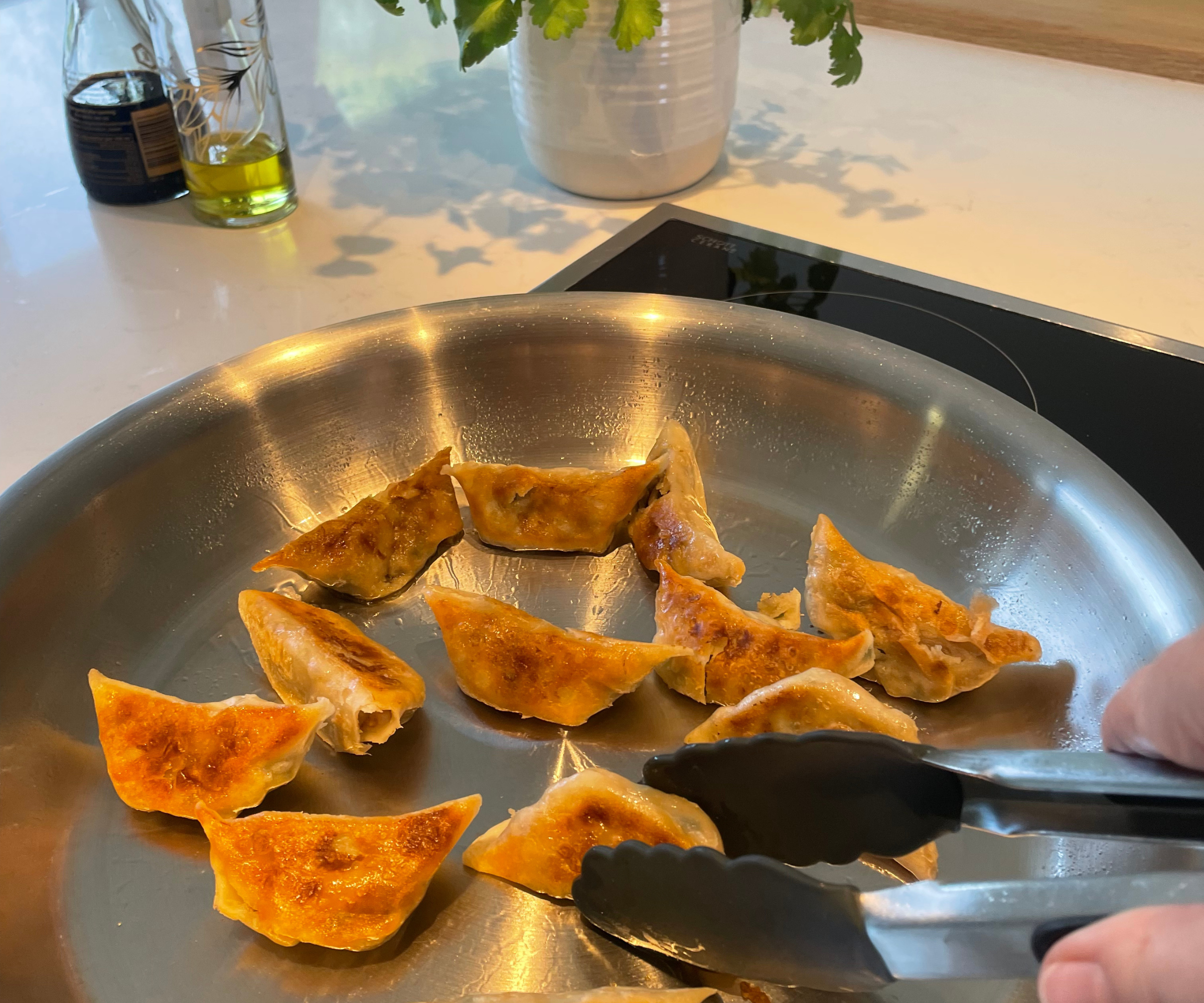
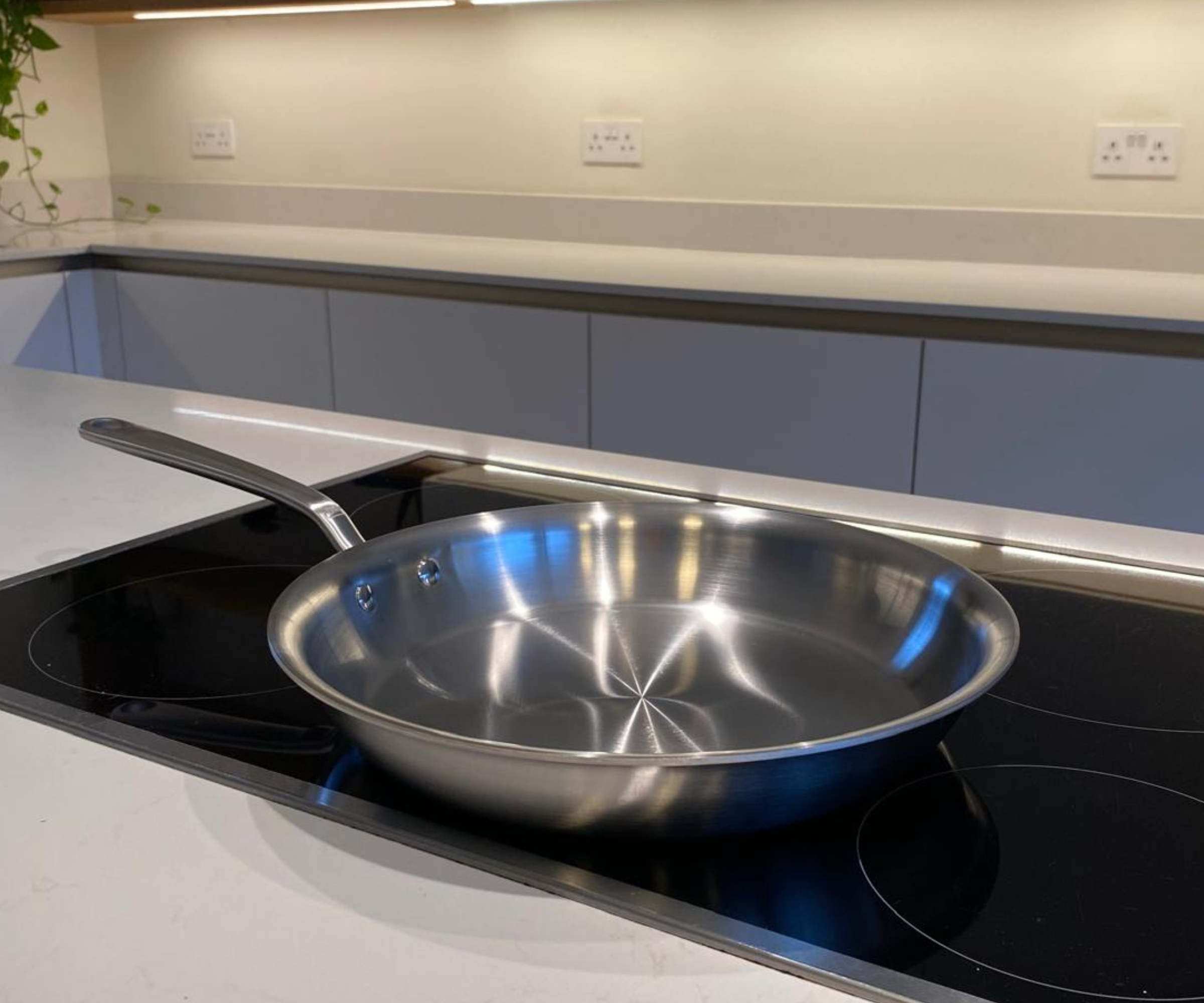
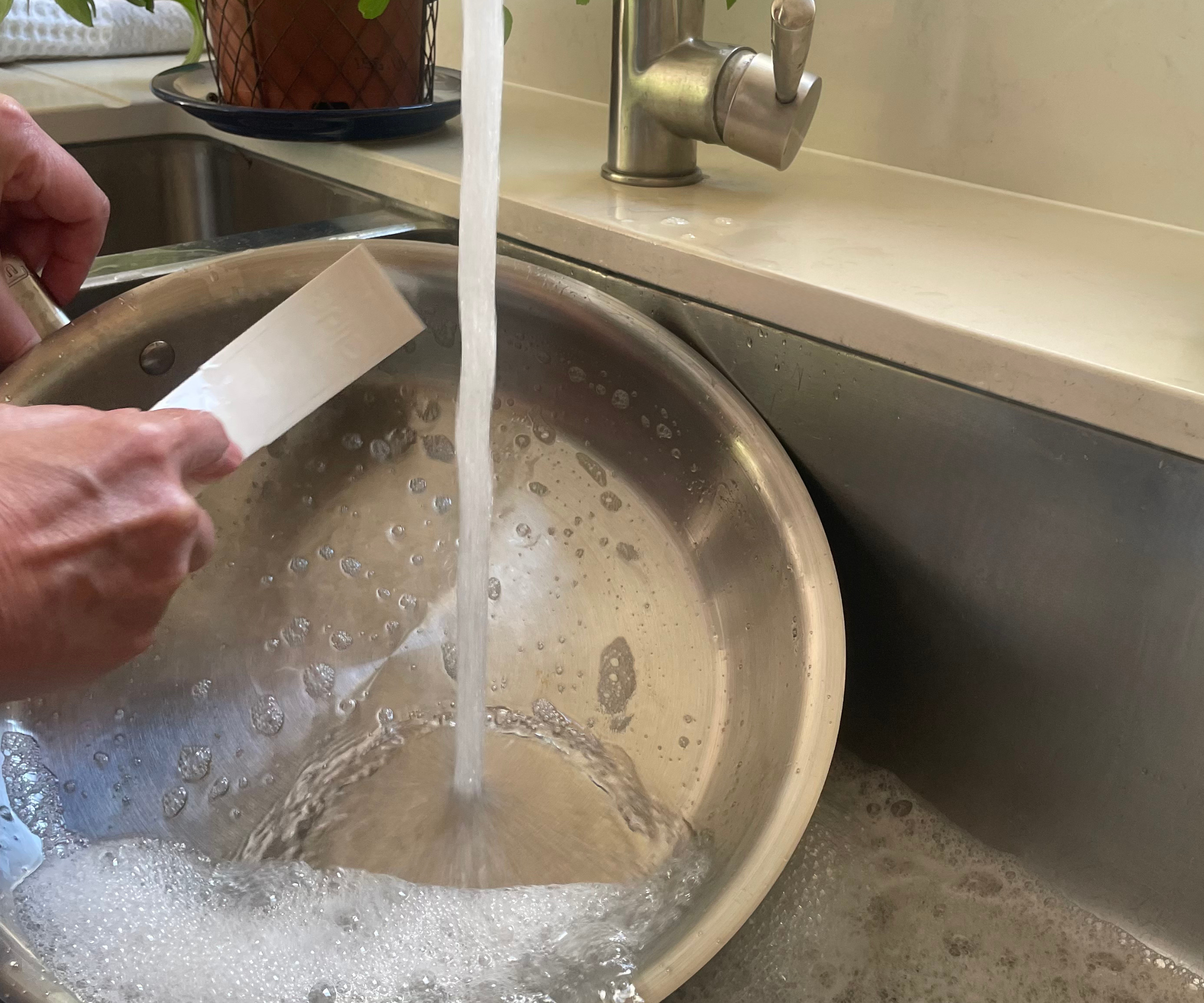
Specifications
Reasons to buy
Reasons to avoid
What makes it non-toxic? The Made In Stainless Steel Pan is non-toxic because it’s crafted from stainless steel, with no chemical coatings that can chip or flake. This material is naturally safe, resistant to leaching, and highly durable, making it a healthier alternative to non-stick pans.
Why we recommend it: I think it's excellent value for money. No gimmicks or fancy designs, just professional-level performance without a designer price tag. The pan is lightweight yet sturdy, well-balanced, heats evenly, and handles everything from delicate sauces to high-heat oven searing up to 800°F.
The wide, spacious surface area gives you plenty of room to cook without overcrowding, ideal for getting crispy edges on pan-seared meat or gyozas (see my picture above). Using medium heat and plenty of oil, everything lifts effortlessly. In terms of durability, Made In's pan is highly resistant to rust, corrosion, and scratching – you can use metal utensils without fear – and it's surprisingly easy to clean, too. It can last decades in your kitchen.
Small criticisms: Cooking with stainless steel does have a learning curve if you haven't used it before. You need to properly preheat the pan and add oil at the right point to prevent sticking. It’s not forgiving if you get it wrong, unlike fool-proof ceramic surfaces, but if you’re patient and adjust your technique, it rewards you tenfold.
Also worth noting: while the pan is highly durable, it’s not immune to heat stains or discoloration over time. You’ll want to give it a good soak and polish occasionally. I’ve found that a bit of Barkeeper’s Friend from Walmart keeps it looking smart.
Read more: Made In Stainless Steel Pan review
Best Cast Iron Non-Toxic Cookware
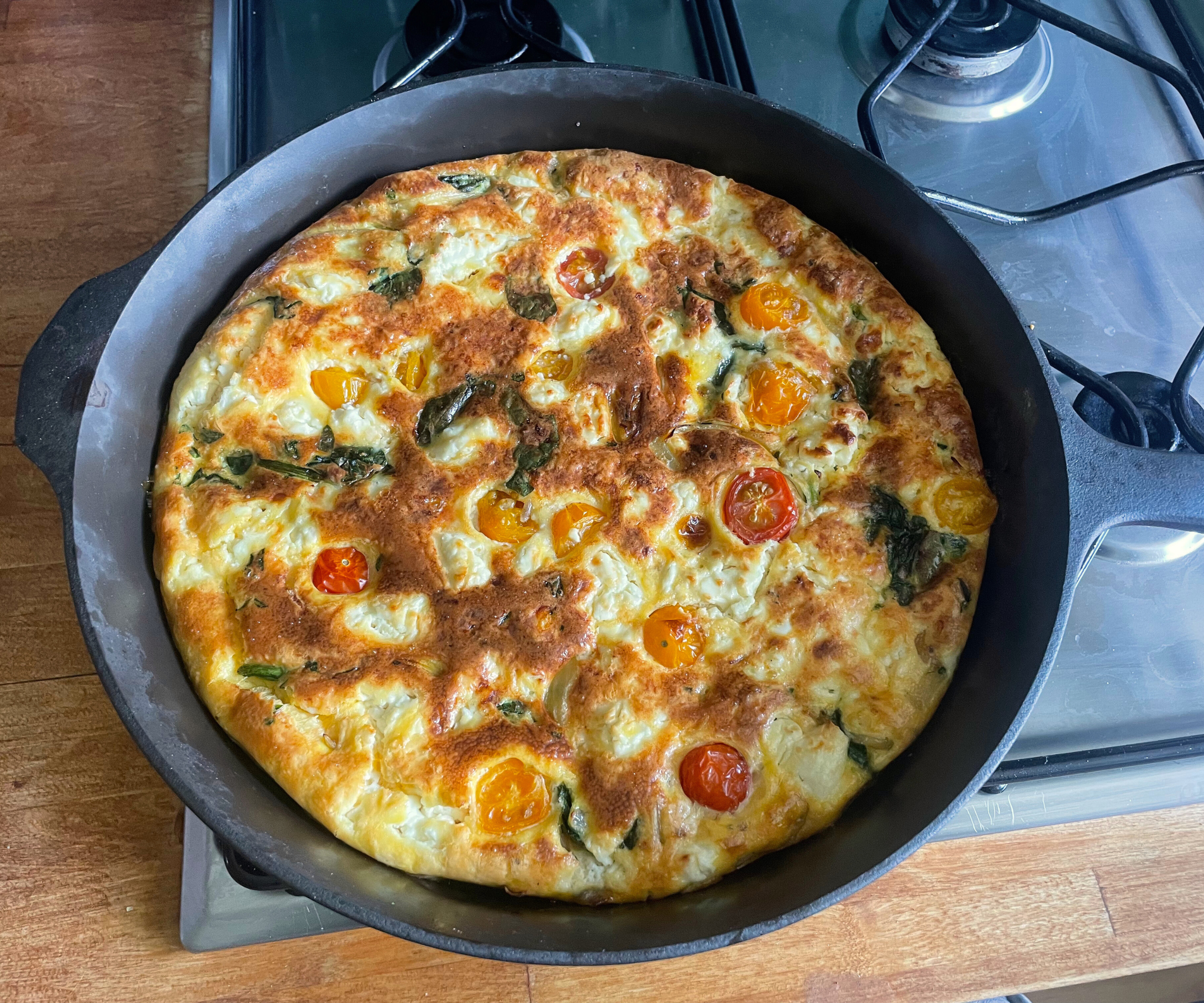
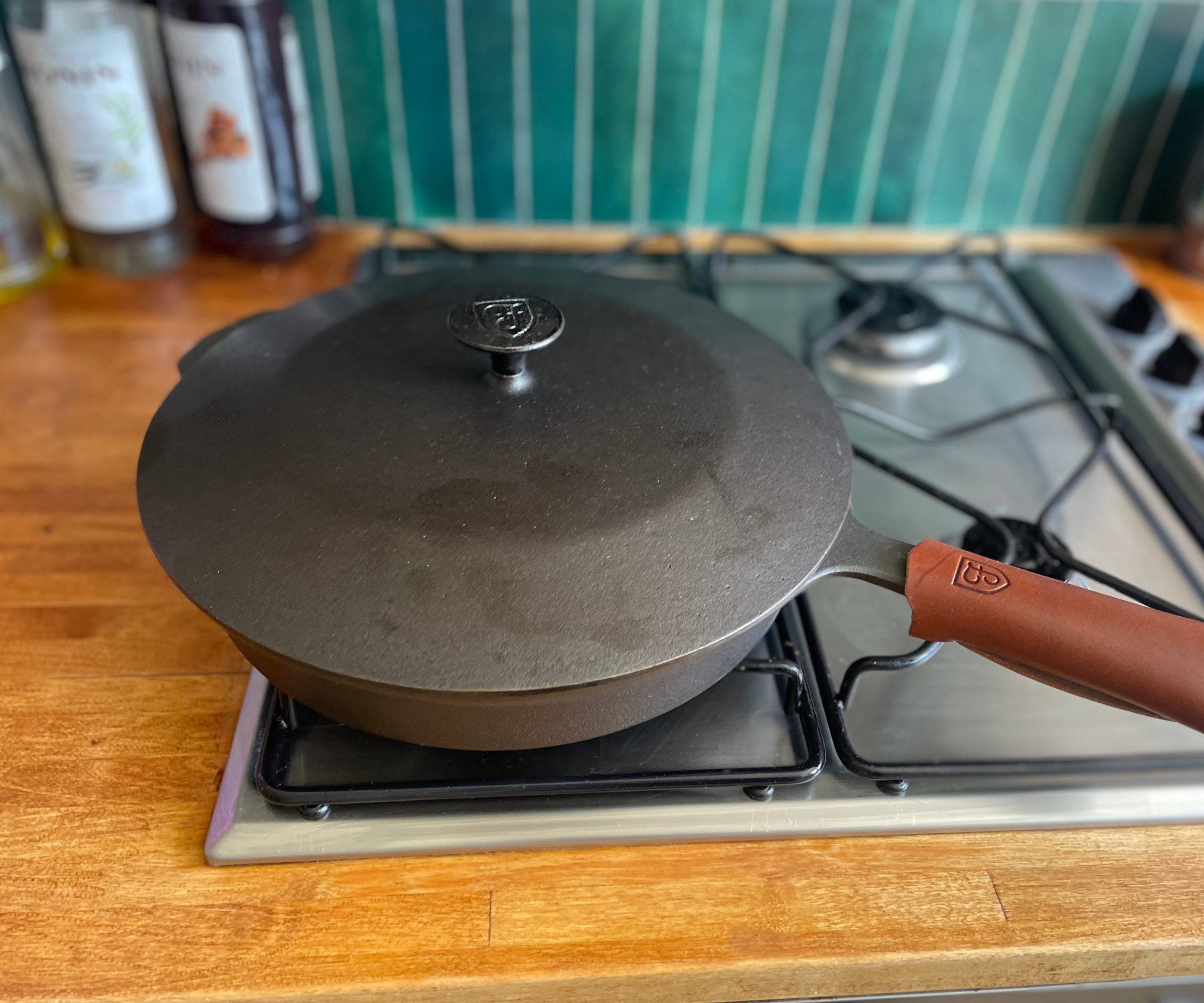
2. Field Company No. 8 Cast Iron Skillet
Our expert review:
Specifications
Reasons to buy
Reasons to avoid
What makes it non-toxic? Field Company’s No. 8 skillet is made from cast iron. It arrives pre-seasoned with organic grapeseed oil, so all you need to do is clean it, heat it, and give it a light seasoning before first use. Over time, the seasoning layers build naturally, creating a non-stick surface without synthetic coatings.
Why we recommend it: The No. 8 skillet has a beautifully smooth surface that helps food release effortlessly. In my tests, oven-baked frittatas and fried eggs all slid out perfectly; the pan’s even heat gave crisp, golden bottoms every time.
At home, my partner immediately claimed it for campfire and fire pit cooking –something you’d never attempt with Teflon cookware, since overheating can damage them or release toxins. With cast iron, you don’t have that worry.
Yes, cast iron needs a little TLC – cleaning, drying, and re-seasoning after each use – but it’s absolutely worth it for this skillet. The non-stick performance actually improved over 4 months of testing – on my most recent test, my pancakes were seamless, golden, and delicious.
Small criticisms: Field Company is more expensive than some cast-iron brands I tested, like Lodge (the budget-friendly option on this list). But I preferred the Field by a long way. The surface is smoother, it is noticeably lighter, and has a premium, vintage feel. It is heirloom quality.
Best Ceramic Non-Toxic Cookware
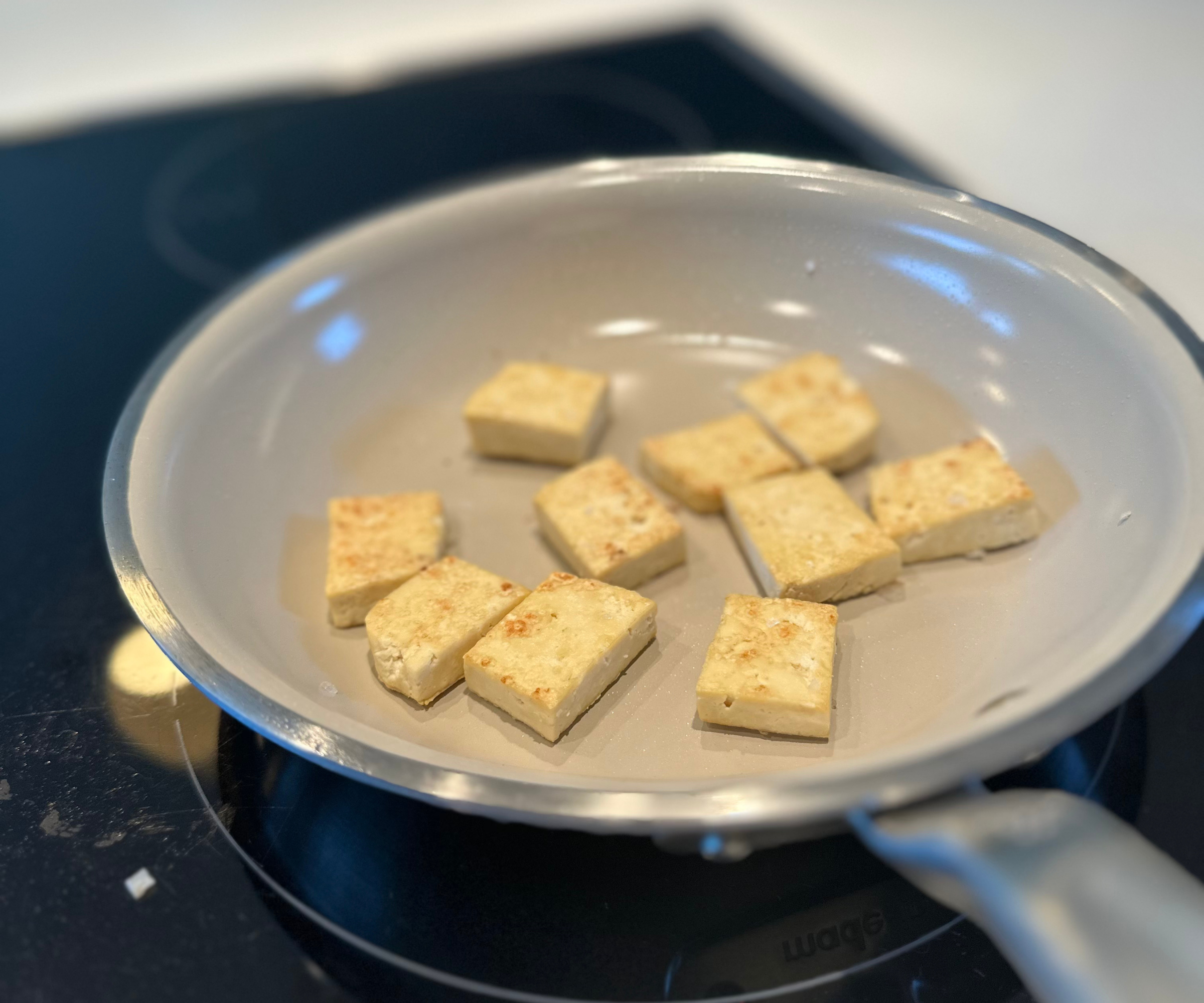

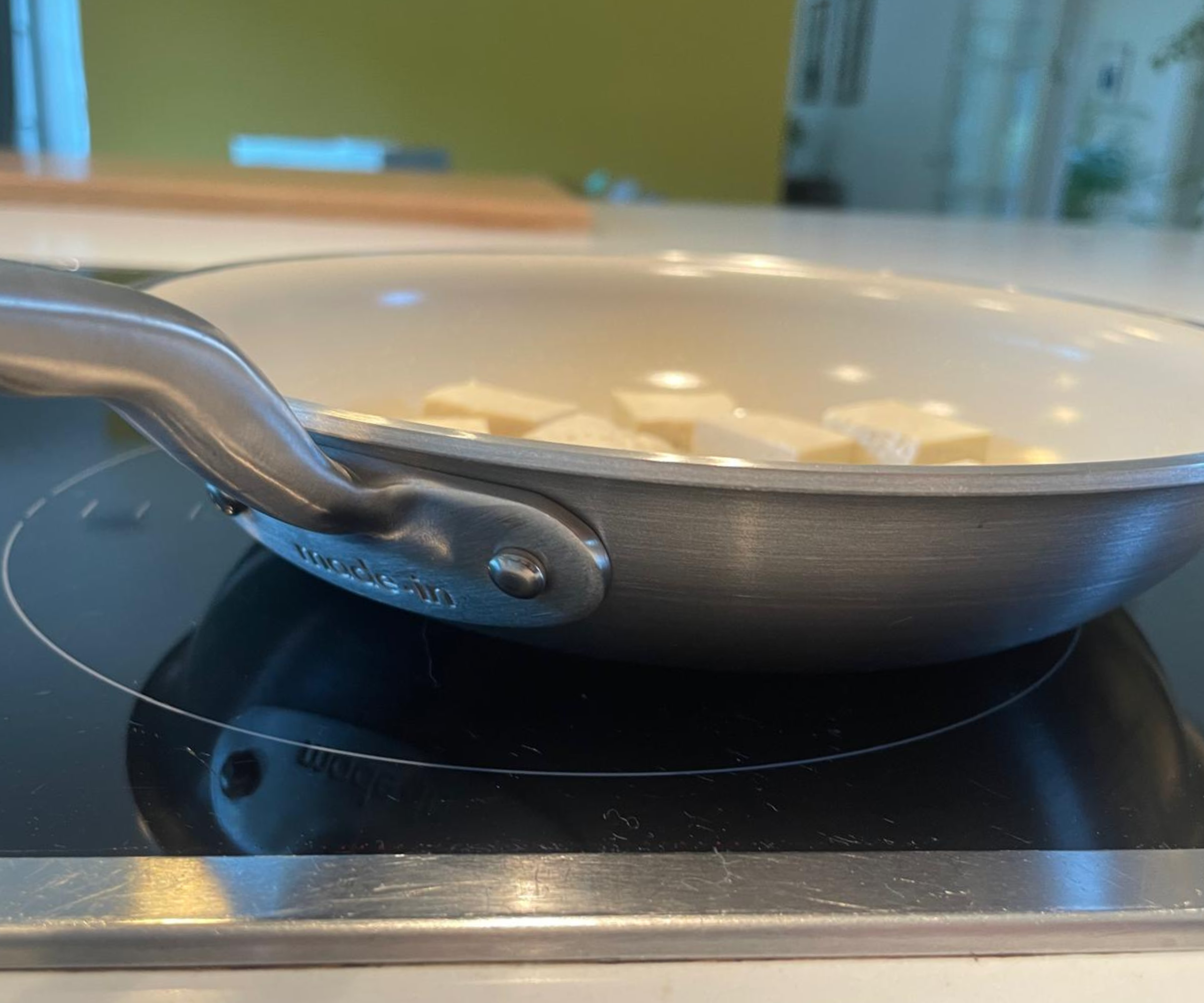
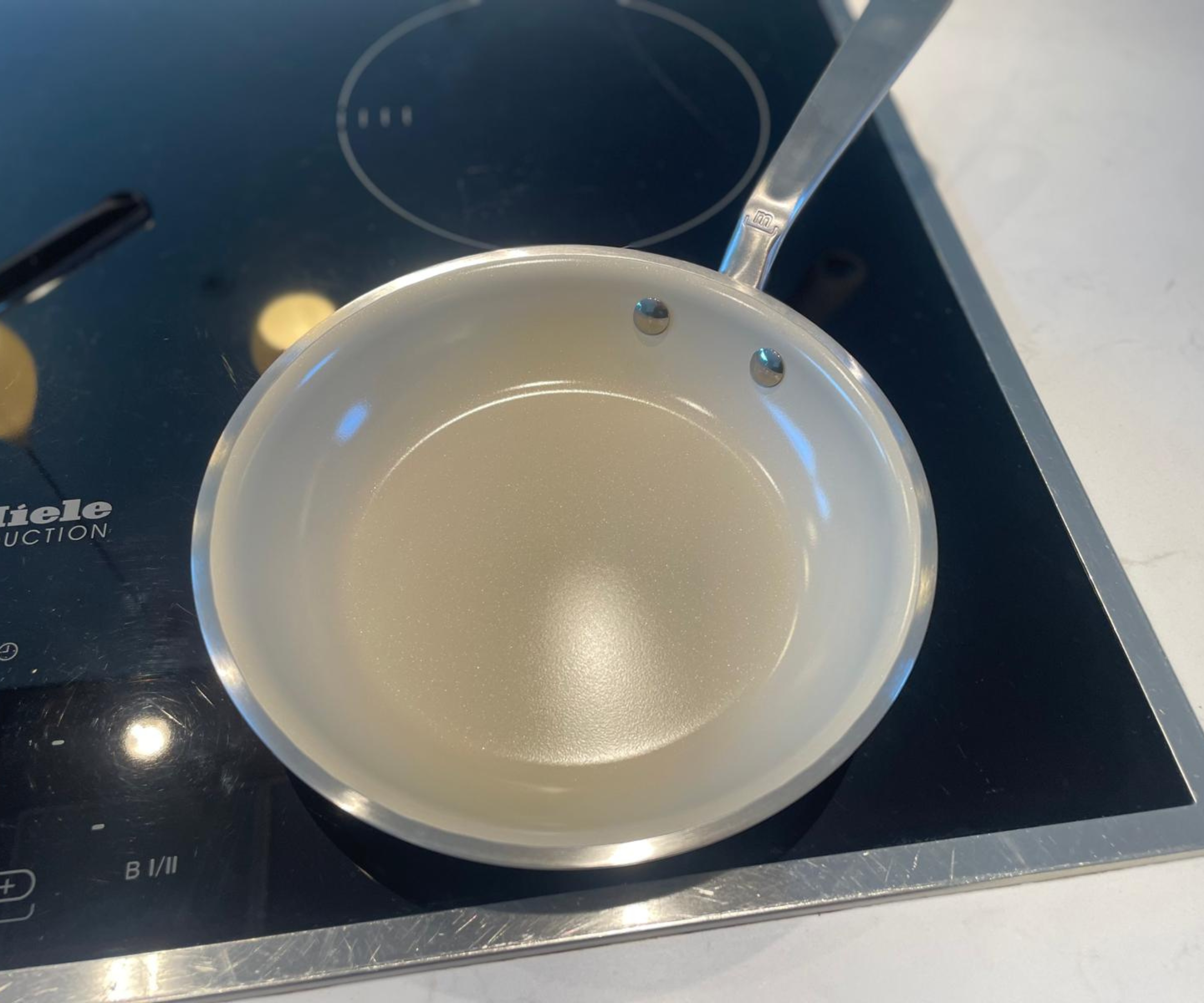

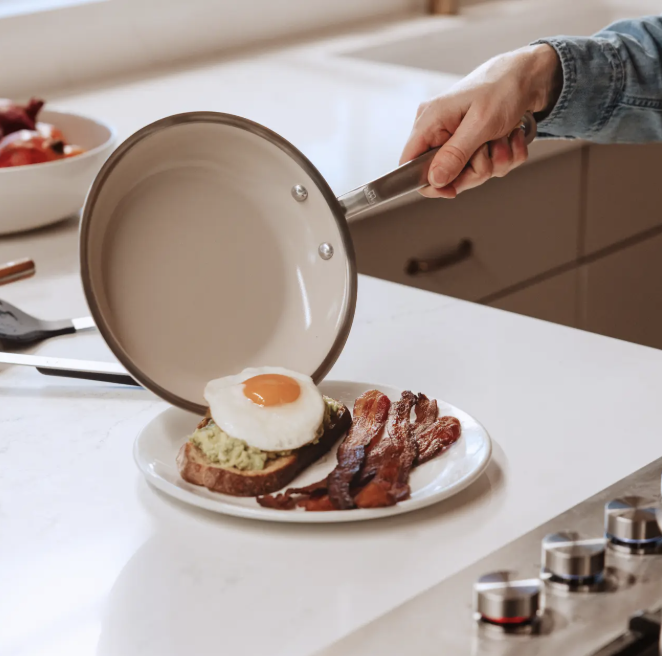
Specifications
Reasons to buy
Reasons to avoid
What makes it non-toxic? This pan uses an American-Made ceramic coating, made without PFAS, PFOA, PTFE, lead, and cadmium – so it’s as healthy as non-stick gets.
Why we recommend it: This pan truly shines when it comes to delicate ingredients. I made fried eggs, tofu, and pancakes in my tests, and they all just slid across the surface, gaining a light golden color. It has a weighty stainless steel bottom, but it is super lightweight, really easy to maneuver, and the handle is comfy. I much preferred it to ceramic rivals I tested, like the original Our Place Always Pan and Caraway.
Small criticisms: My main gripe with ceramic is that oil tends to pool on the surface, rather than spreading evenly. But on the bright side, you don't need much oil at all. The MadeIn CeramiClad was a cinch to clean (it took literally seconds), but I found that the stainless steel rim tarnished after first use and looked messy next to the spotless ceramic lining.
Finally, I find non-stick ceramic a bit fiddly to care for; you can't use metal utensils, you need to store and stack it with pan dividers to avoid chipping, and it needs gentle cleaning by hand. Ceramic will never be as durable as stainless steel or cast iron, but it really is a lifesaver for those sticky tofu, cheese or egg recipes.
Read more: Made In CeramiClad review
Best Budget Non-Toxic Cookware
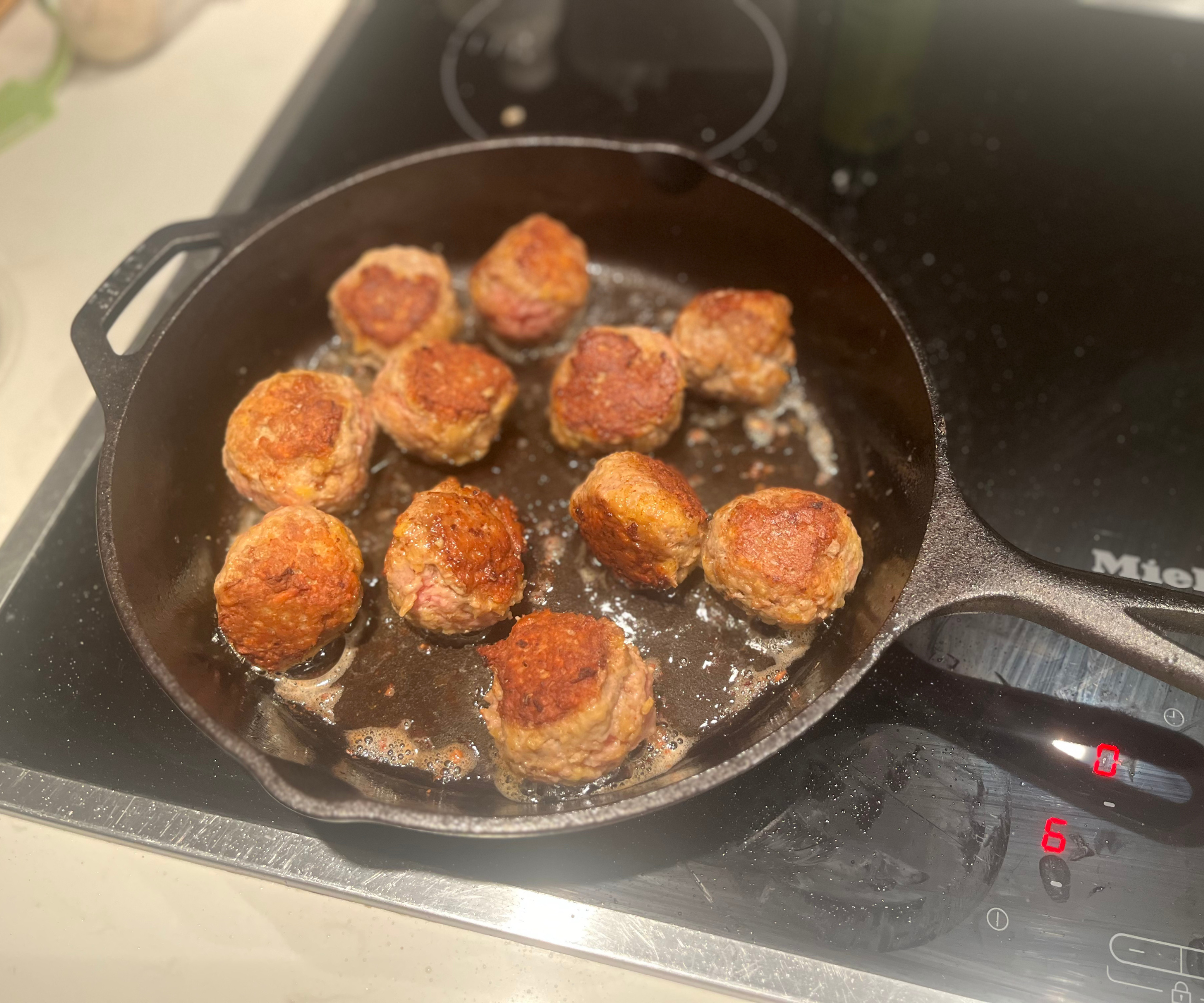
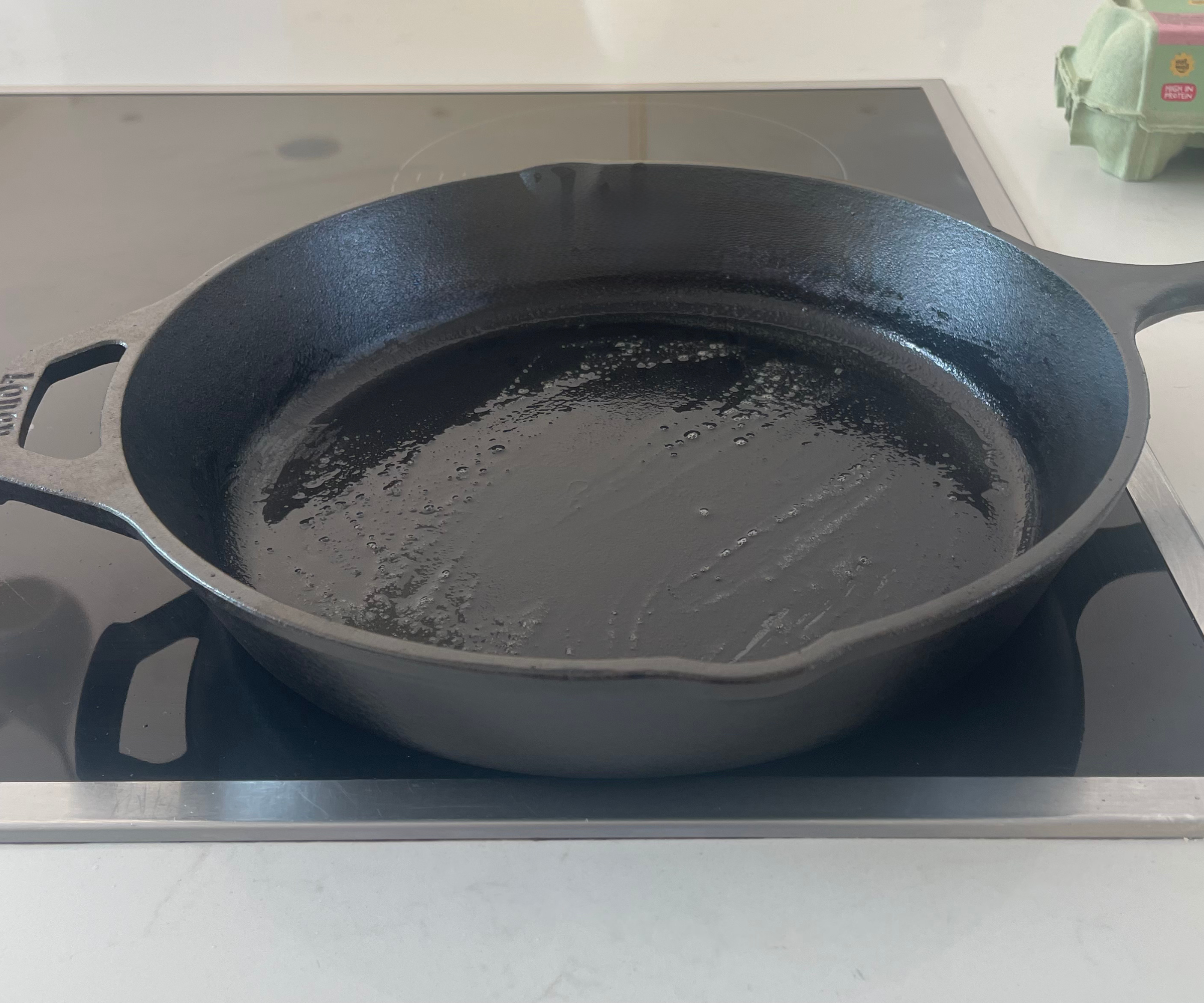
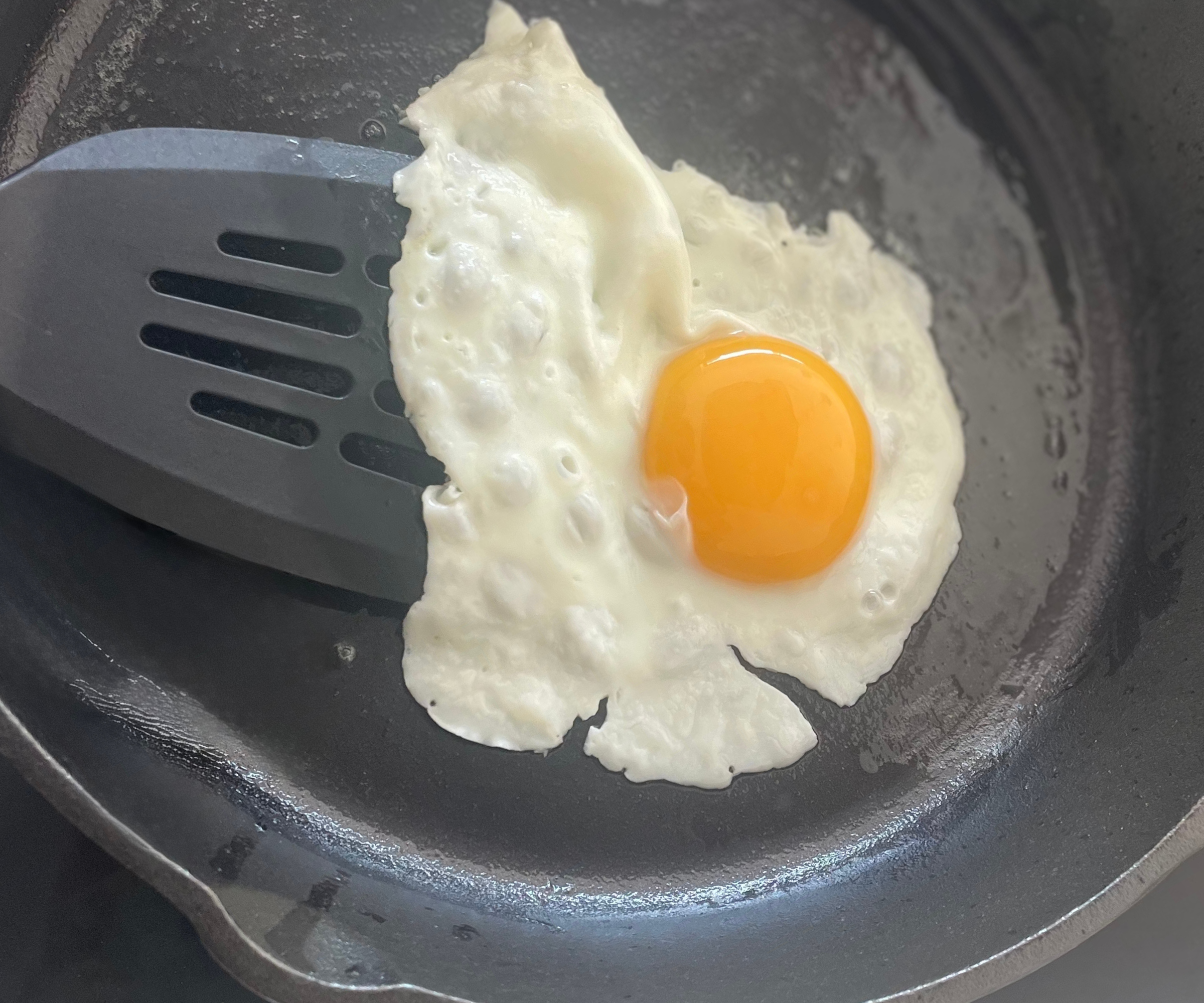
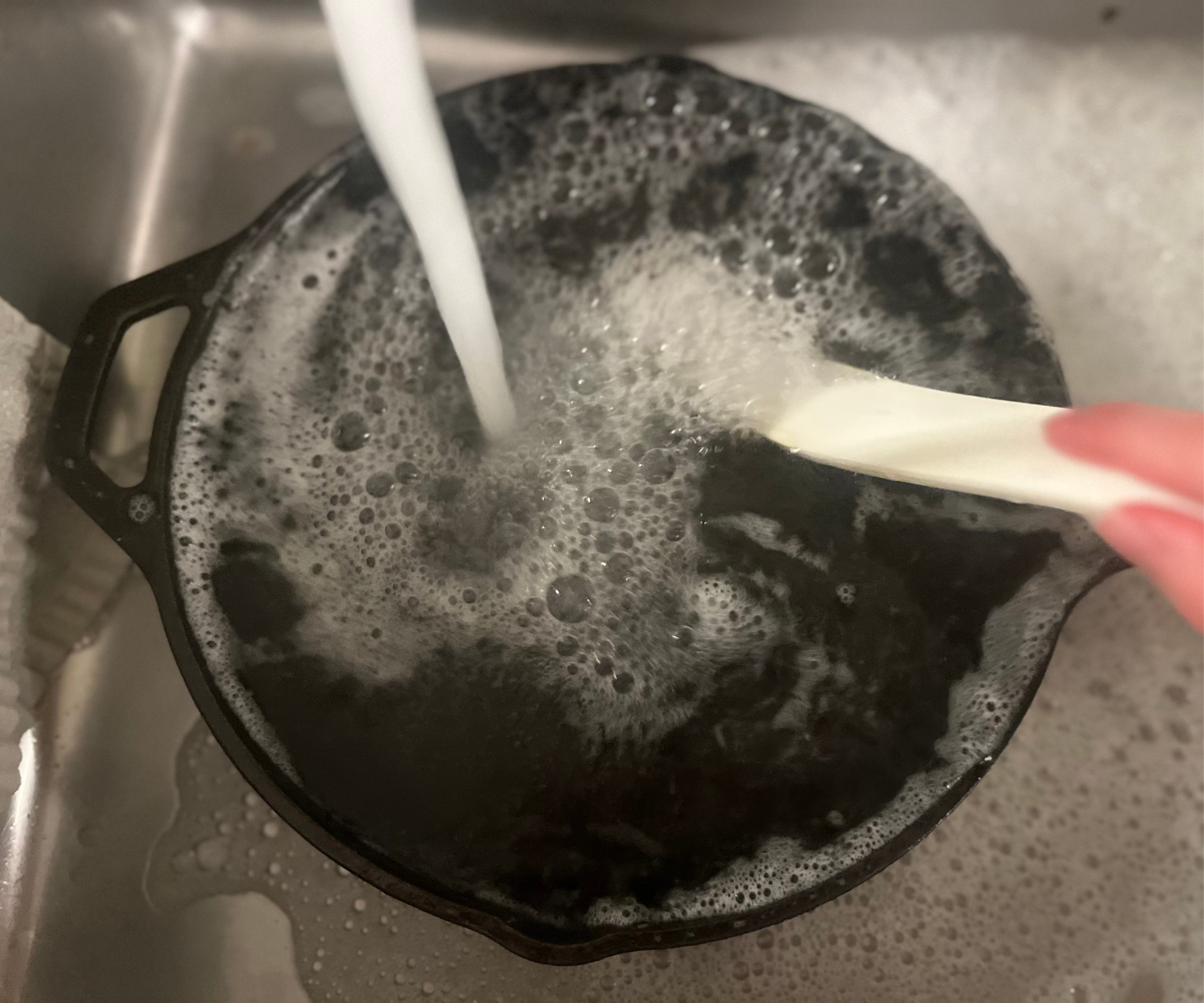
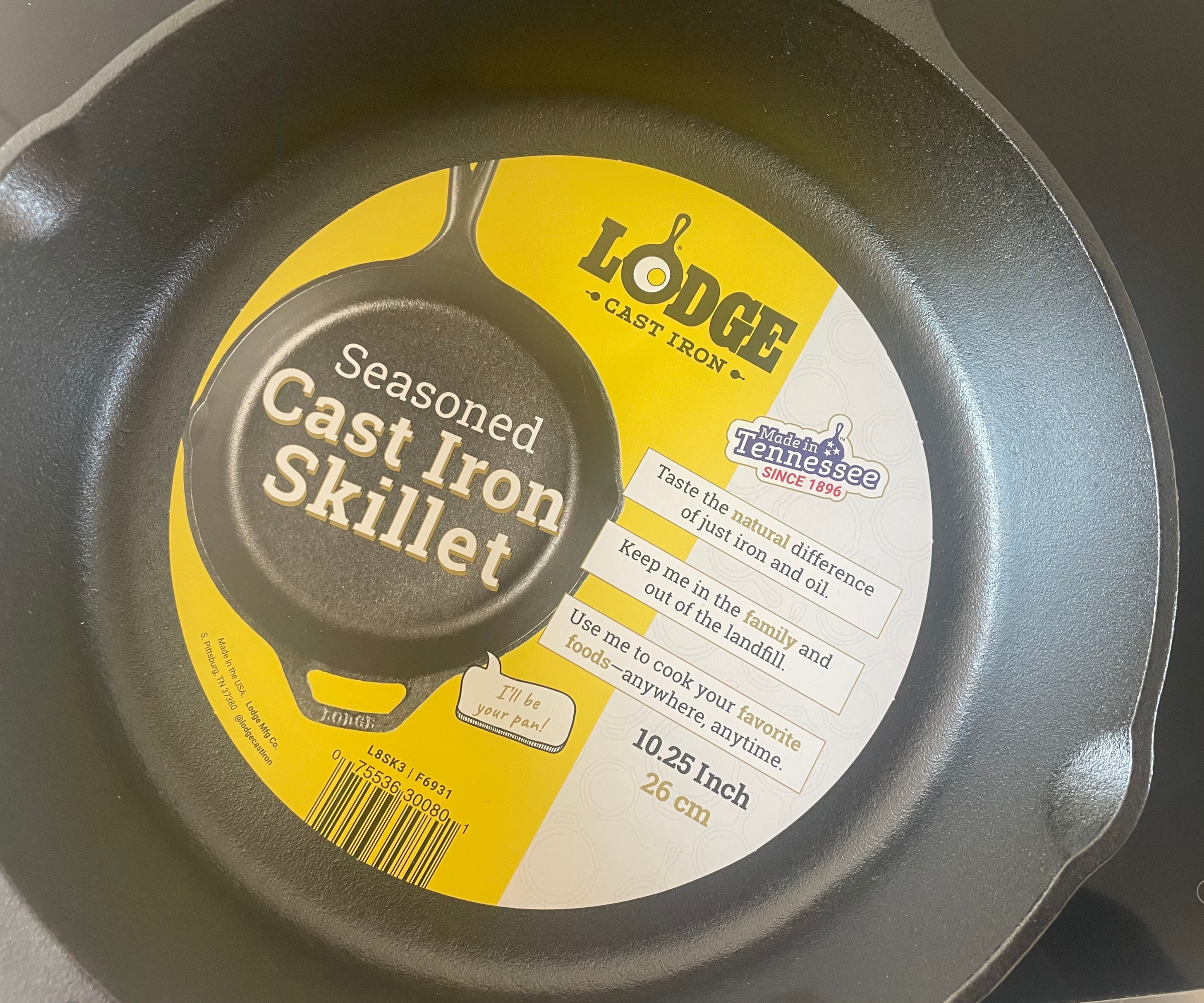
Specifications
Reasons to buy
Reasons to avoid
What makes it non-toxic? Lodge cookware is non-toxic because it’s made from pure cast iron that can safely withstand very high heat. There are no chemical non-stick coatings. Instead, you need to season it with natural vegetable oil, which polymerizes into a safe, durable cooking surface.
Why we recommend it: If you're new to cast iron cooking and don’t want to break the bank, Lodge is a smart place to start. The range is often discounted on Amazon, with prices starting at $19 for a small Lodge skillet – so you can pick up a couple of pans of different capacities and functions for a very reasonable price.
In my tests, I found the skillets are unfussy, durable, and the natural non-stick improves with use. They arrive pre-seasoned, though you’ll need to maintain that surface yourself with regular maintenance. They’re good for everyday cooking – I seared some great steaks and homemade burgers for dinner – but the slightly shallow design makes them less suited to deep-frying or baked dishes. The Chef Collection skillet was the favorite in my tests. It has sloped sides and a pour spout for easier flipping and serving, and it’s 15% lighter than the classic Lodge version – a bonus if you want something easier to maneuver.
Small criticisms: I recommend Lodge if value is your top priority. That said, I personally prefer the cast-iron skillet from Field Company. The surface is smoother, it’s noticeably lighter and easier to handle, and it just feels more premium overall – but it is over $100 more expensive.
Read more: Lodge Chef Collection Skillet review
Best Hybrid Non-Toxic Cookware
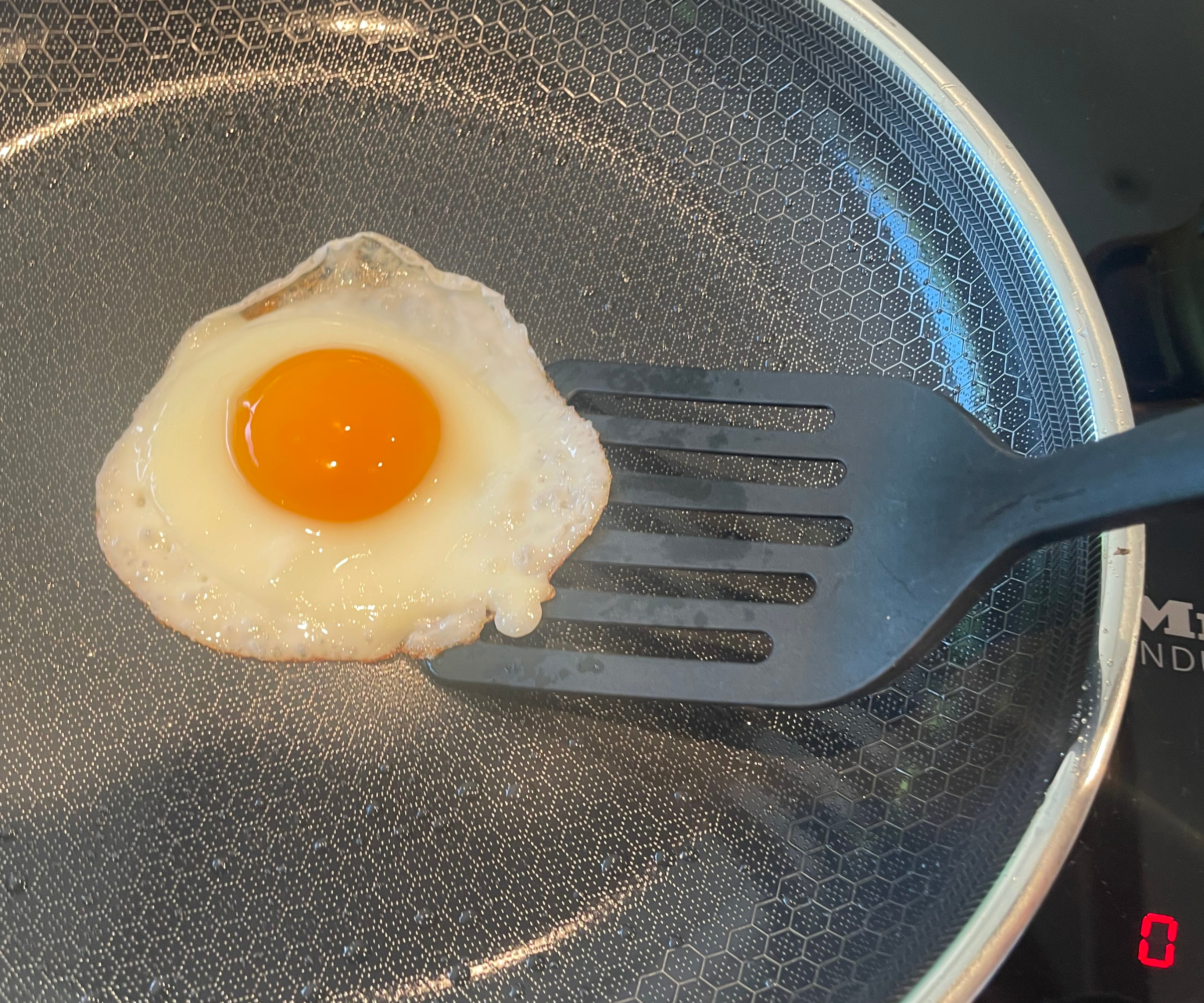
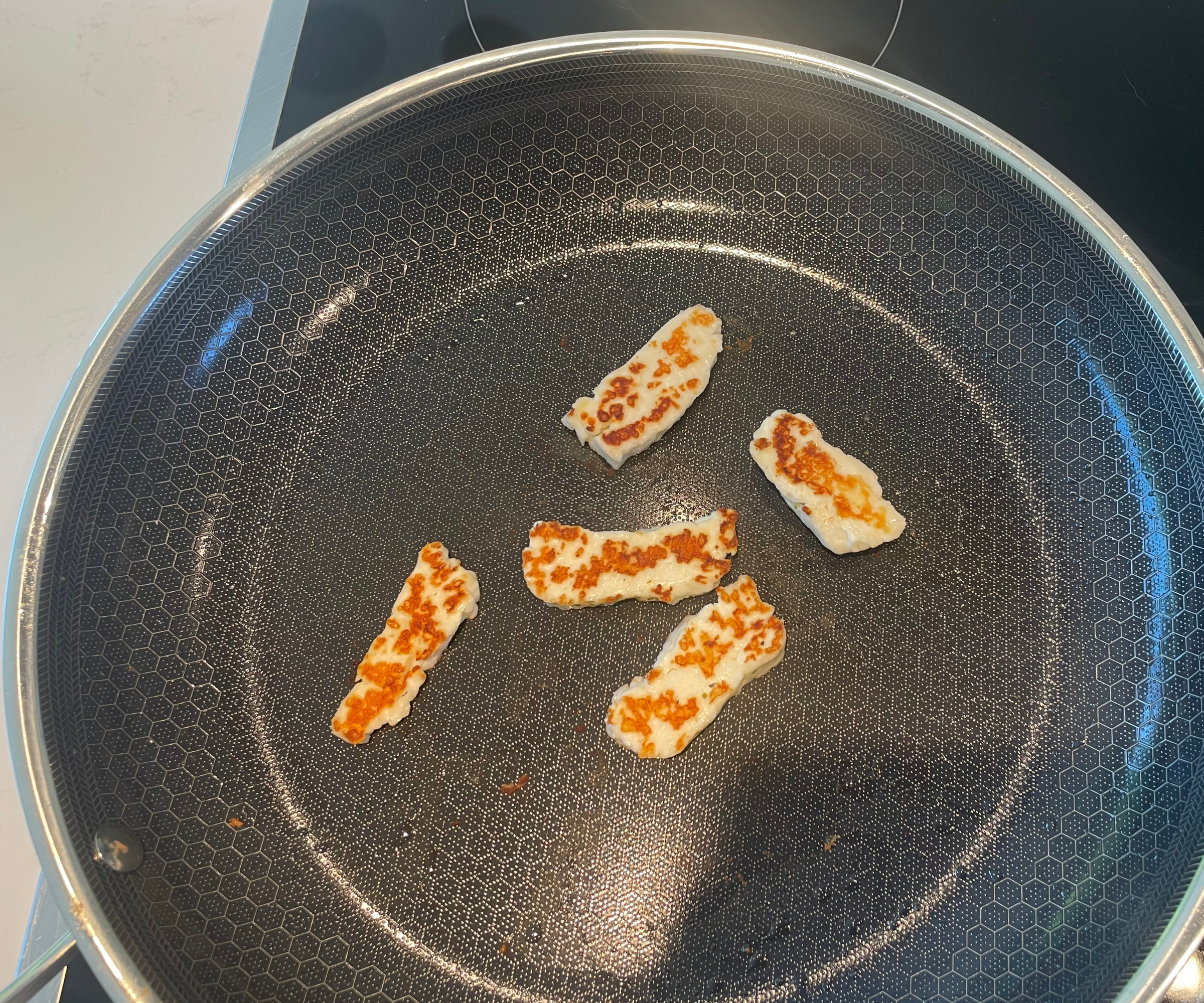

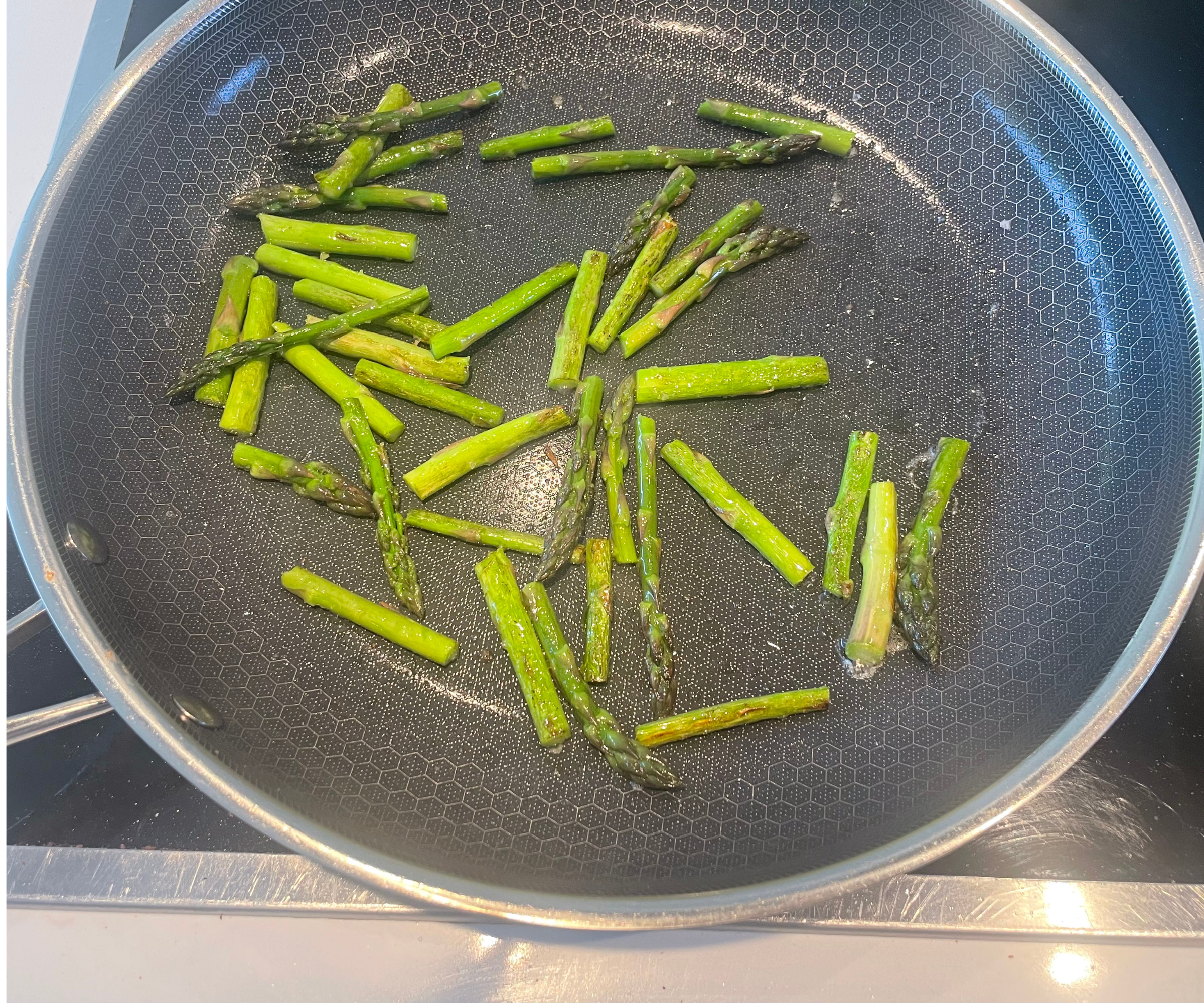
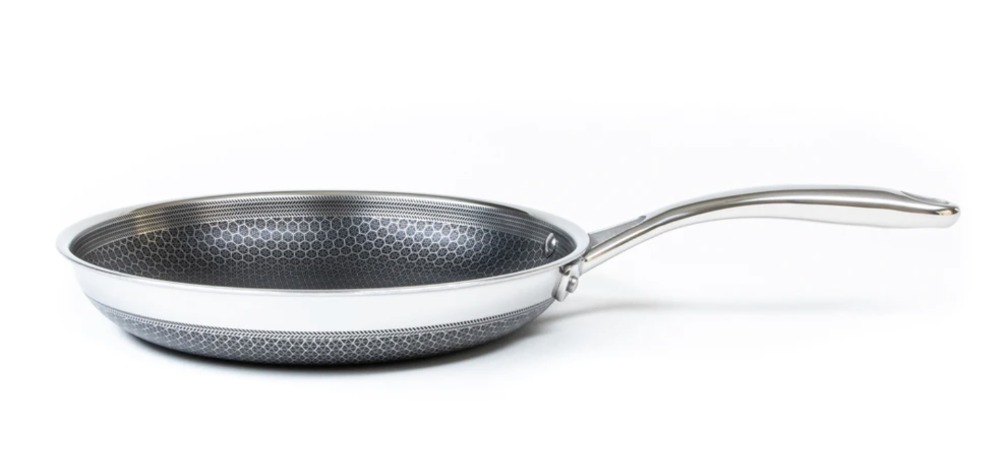
Specifications
Reasons to buy
Reasons to avoid
What makes it non-toxic? HexClad pans are considered non-toxic because their hybrid surface combines stainless steel peaks with a ceramic non-stick. Earlier models (produced between 2022 and early 2024) were found to use PTFE-based coatings (you may recall the lawsuit on this). However, independent third-party testing conducted in 2025 found no detectable traces of PFAS compounds in the current collection. This means you get the benefits of non-stick cooking without the health concerns associated with traditional coatings.
Why we recommend it: HexClad's non-stick surface is impressively durable and effective. I made perfect fried eggs, tofu, and halloumi in the kitchen – and the pans can withstand metal utensils. I've been using mine for 10 months now, and it shows no signs of flaking or peeling.
You just need to cook on medium heat and make sure to season before the first use, and occasionally after if you notice sticking. When I charred the corn in the pan, I ended up with some burnt-on bits and darkened areas on the surface. I panicked briefly, but it was easier than I expected to remove. I found that cleaning with baking soda and white vinegar got rid of the stains within a couple of minutes, and left the pan looking as good as new.
Small criticisms: The seasoning instructions weren’t immediately obvious when I opened the packaging. I only knew because I research and write about this stuff 24/7. HexClad is also fairly pricey (unless you are shopping the sales), and I can't see myself passing it down to my grandkids like other heirloom brands, such as Le Creuset and Field Company.
Read more: HexClad Hybrid Fry Pan review
Best Dishwasher-Safe Non-Toxic Cookware
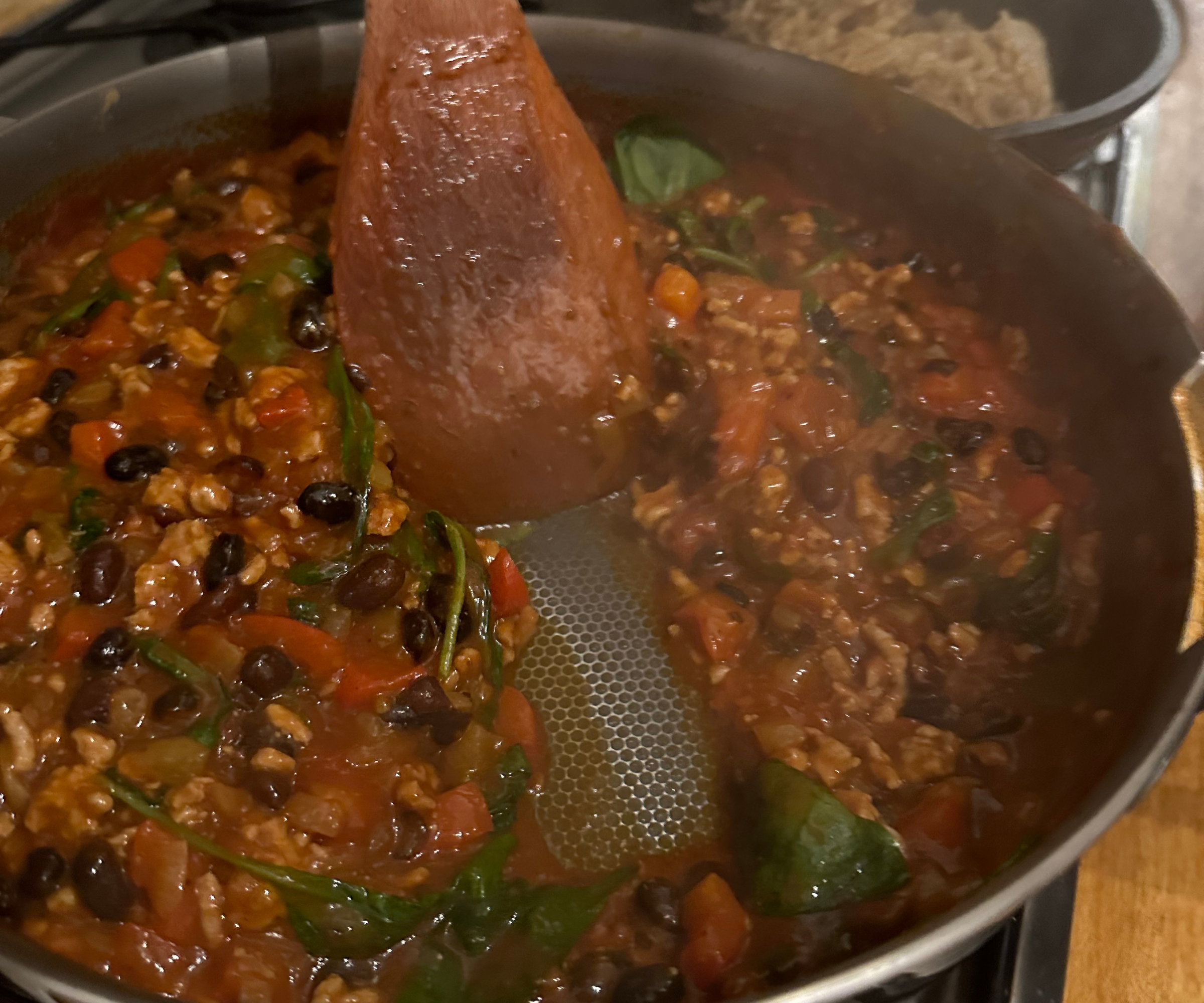


7. Our Place Always Pan Titanium Pro
Our expert review:
Specifications
Reasons to buy
Reasons to avoid
What makes it non-toxic? Our Place has created a coating-free pan made without forever chemicals. Instead, tiny titanium grooves provide a natural, non-stick effect. They call this 'NoCo™ technology.'
Why we recommend it: In my tests, the Always Pan Pro performed beautifully: it was easy to achieve nice browning without sticking on diced onions, pork mince and even sticky paneer cheese. I love that the shape is so deep and versatile. The titanium surface is scratch-resistant and 300% harder than stainless steel. I used it every night for exactly three months in my tests, with no concerns about peeling or damage over time.
If you're a busy person, you'll love that this pan is dishwasher-safe. Even after multiple cycles in my dishwasher, the pan still works well. It also comes with a cleaning brush for hand-washing, which is very effective for scooping up leftover fond, but it does take a little elbow grease. Our Place recommends seasoning after cleaning to keep the pan at peak performance, so it is not entirely maintenance-free.
Small criticisms: My pan now has some stains on the exterior, which are pretty unsightly. The pan is cumbersome, since it is made of tri-ply titanium and stainless steel. I found it way too heavy for tasks like tossing stir-fries or pastas. If you’ve got weak wrists like me, you might prefer something more lightweight, like the Made In stainless steel pan (which is also cheaper and half the weight).
Read more: Our Place Titanium Always Pro Pan Review
Best Enameled Cast Iron Non-Toxic Cookware
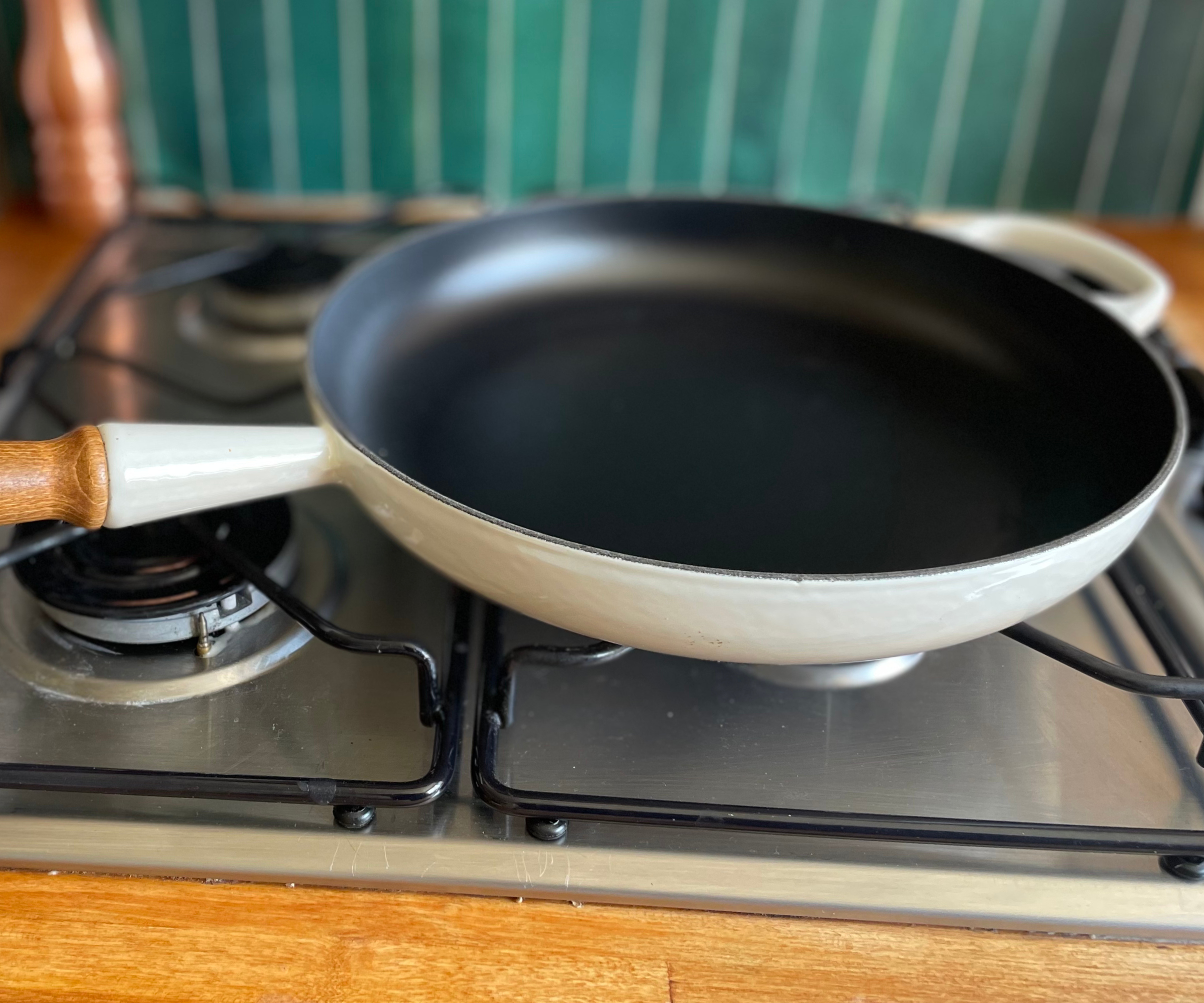
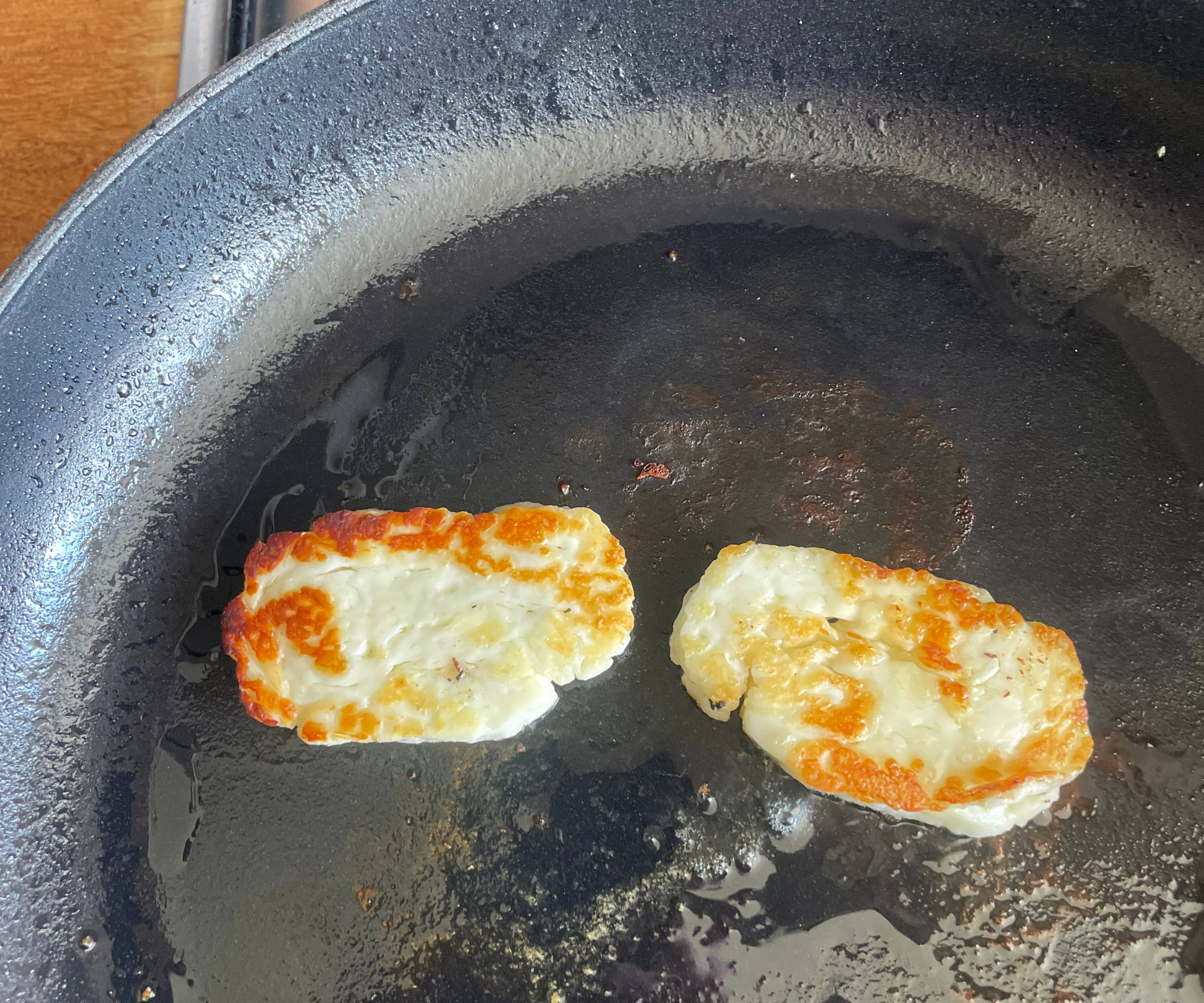
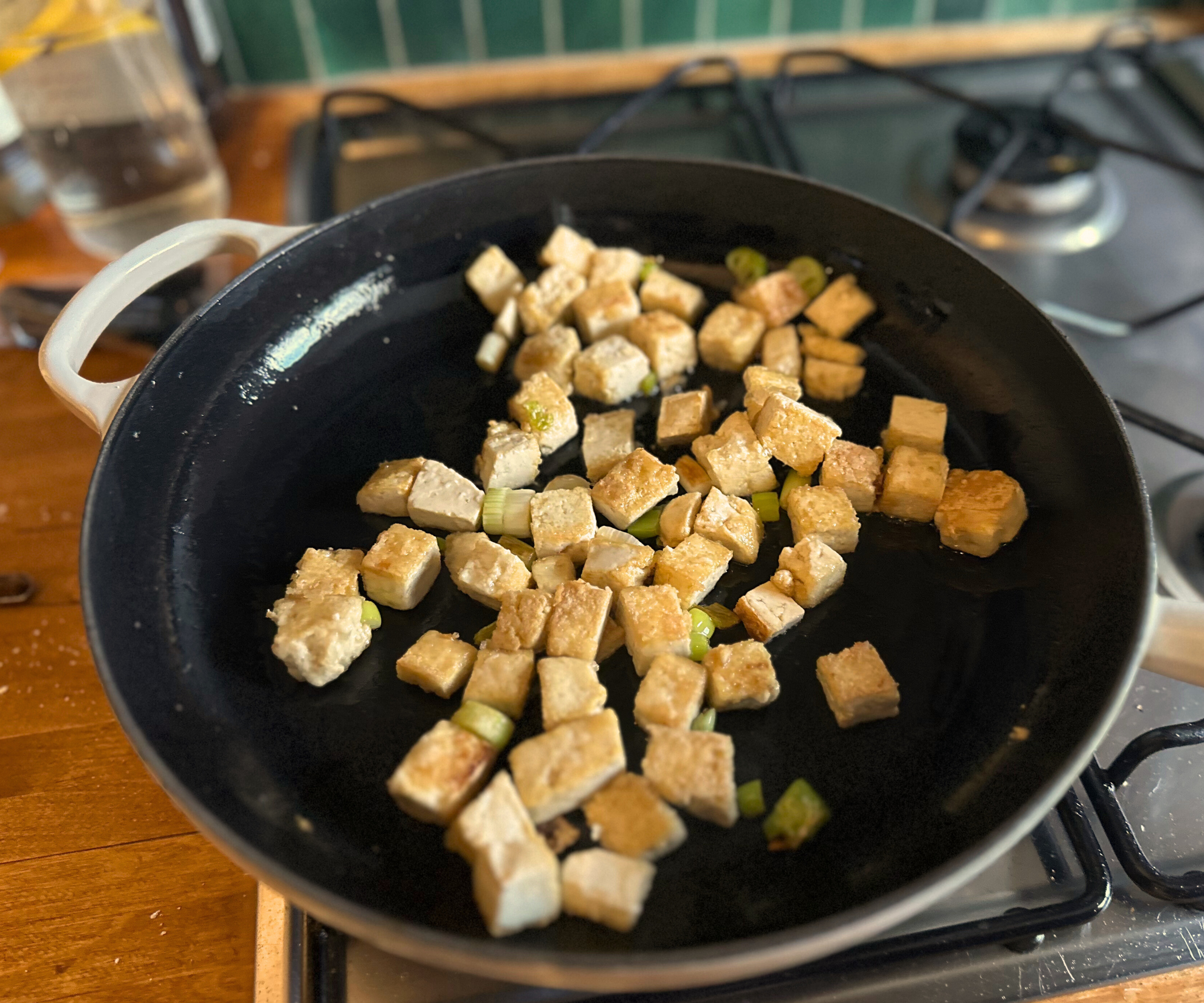
4. Le Creusest Alpine Wood Pan
Our expert review:
Specifications
Reasons to buy
Reasons to avoid
What makes it non-toxic? The black satin enamel surface on this Le Creuset Alpine pan is free from PFAS. The surface resists dulling, staining, chipping, and cracking, doesn't require any seasoning, and develops a patina over time, which reduces sticking.
Why we recommend it: Using medium-low heat, I got great results on sticky ingredients like tofu and halloumi, which turned out perfectly golden. If you do end up with crispy burnt bits, a quick soak and a gentle scrub with a soft sponge is all you need to loosen them.
The pan is very wide and shallow, so I did find it better suited to large dishes. I ended up using it mainly for crepes and paellas to feed the whole family. It is nice for serving dishes straight to the dinner table. The food stays warm (thanks to the heat-retentive cast iron), and it looks lovely and rustic (thanks to the wooden handle). There's a hook to hang it up on display, and of course, it is available in Le Creuset's most gorgeous colors.
Small criticisms: It is pretty heavy (not recommended if you have mobility issues), and it might be too wide and large for some people or stovetops. It is also expensive, but has a beautiful, heirloom quality that I don't think you'll regret investing in.
Read more: Is Le Creuset Worth It? A Chef's Review
Best Copper Non-Toxic Cookware
5. Hestan CopperBond Fry Pan
Our expert review:
Specifications
Reasons to buy
Reasons to avoid
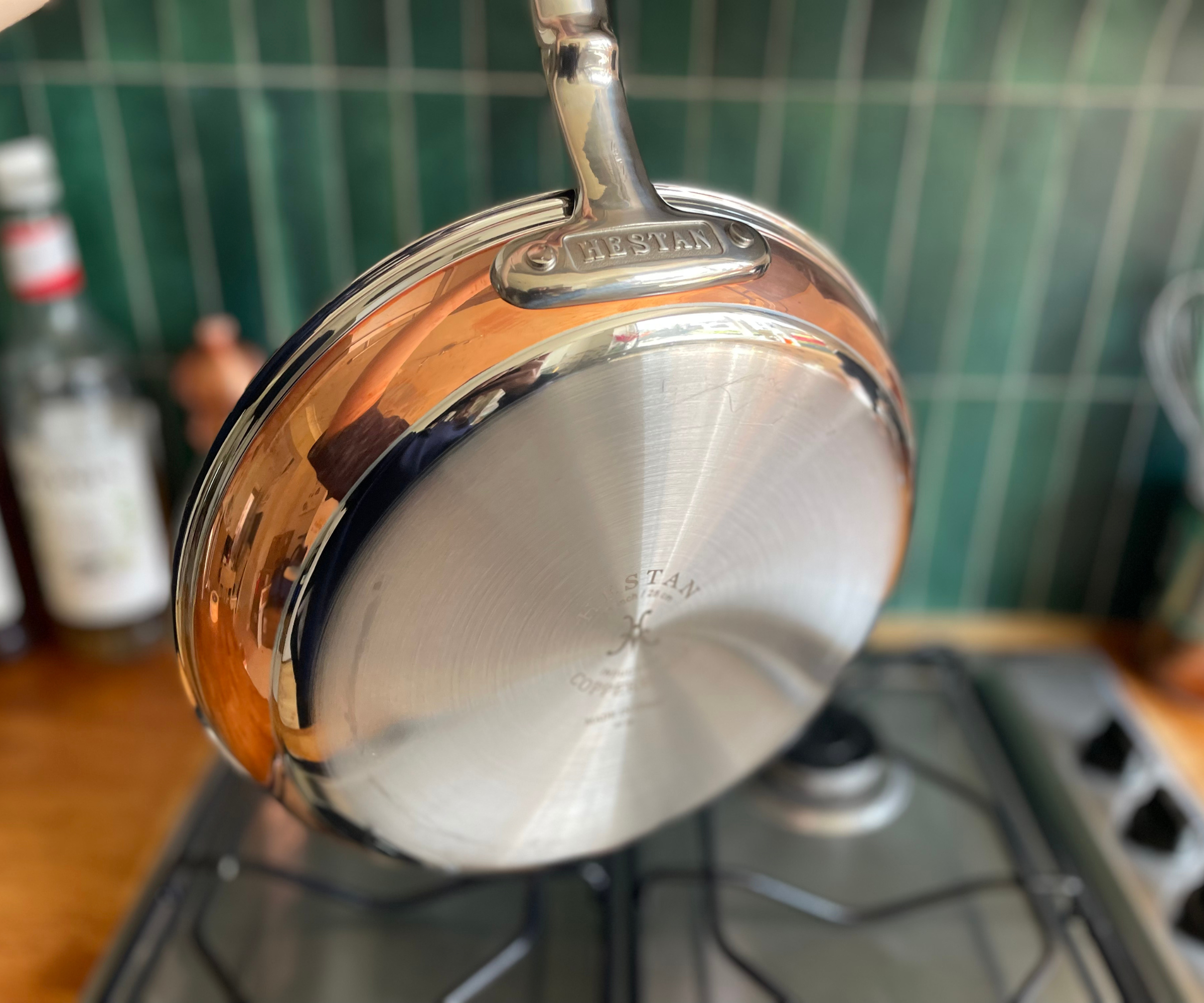
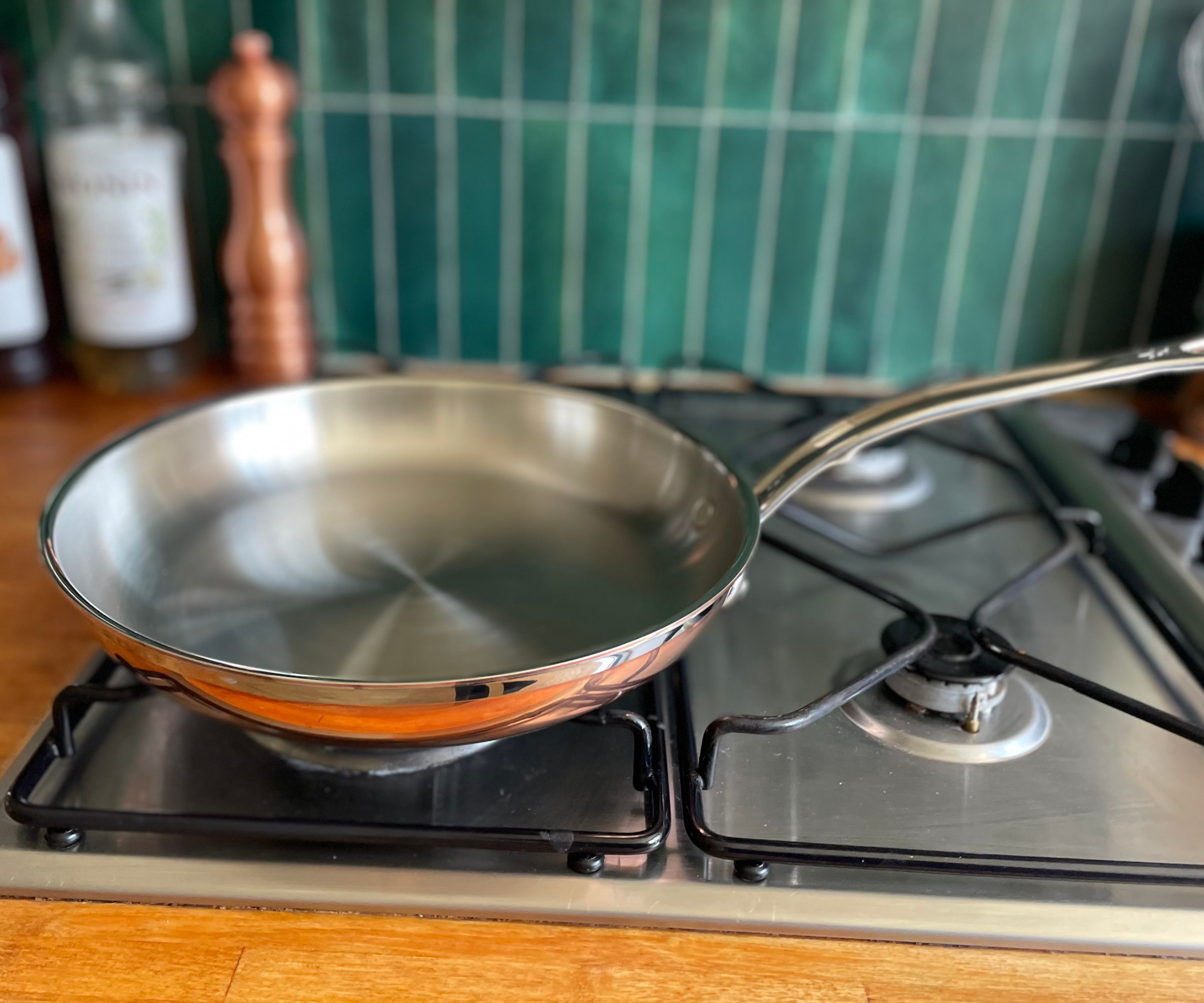
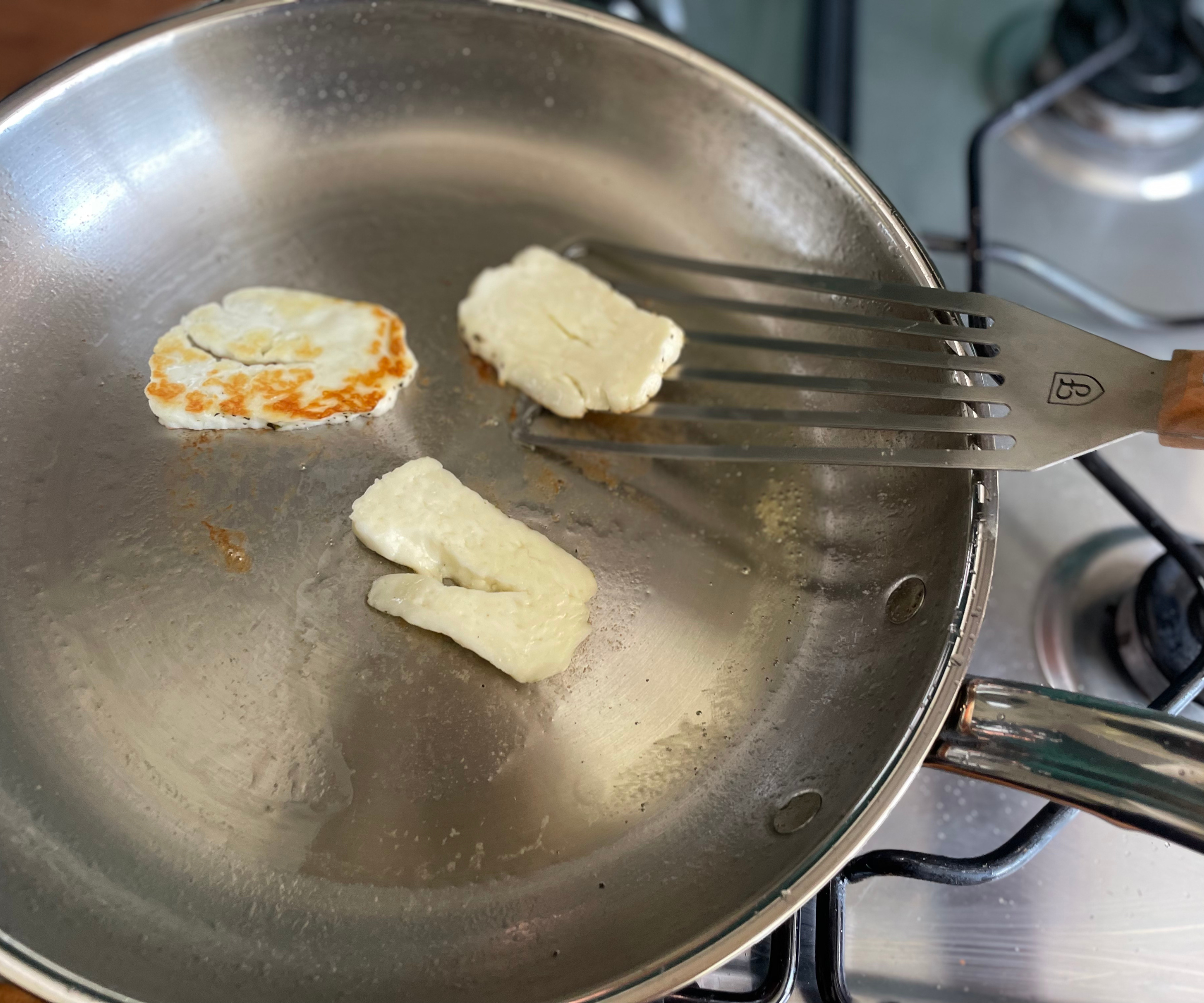
What makes it non-toxic? This pan is made in Italy with five bonded layers of quality metal – stainless steel on the cooking surface, a copper core for incredible heat retention, and a polished copper exterior. You can feel the quality and craftsmanship the second you pick it up. There are no cheap coatings or toxic chemicals here.
Why we recommend it: Copper is an exceptional conductor of heat; this pan responds very quickly to temperature changes on the hob, so it is ideal for precise cookery, as well as everyday recipes. My sautéed onions turned out golden and soft. My steak was beautifully seared and medium-rare inside. Even my trickiest test subject, halloumi, flipped without sticking.
The handle stays cool, and feels comfortable and well-balanced. Hestan's pan never felt bulky or awkward to maneuver. It is surprisingly easy to clean, too. Even when I took my eye off the ball and thought I might’ve overcooked some mushrooms, the brown fond wiped off easily after a short soak. The copper exterior has developed a bit of patina over time, but I actually like that – it makes it feel lived-in and well-loved. There's a 'French-style' charm to the copper look.
Small criticisms: The only caveat is the high price tag. But honestly, it was the standout in every test. If you're looking to invest in one beautiful, non-toxic pan that delivers every time – don't think twice.
Most Versatile Non-Toxic Cookware







Specifications
Reasons to buy
Reasons to avoid
What makes it non-toxic? Caraway's USP is non-toxic cookware. While they offer ceramic non-stick pans, I prefer their 18/10 stainless steel collection, which is built to last. With no coatings to worry about, you can sear, sauté, or slow-braise without fear of chemicals leaching into your food.
Why we recommend it: This versatile sauté pan is the all-in-one solution for anyone looking to replace a batch of flimsy Teflon pans. It is sleek and minimalist, heats evenly, responds well to temperature changes, is oven-safe, and feels sturdy and well-balanced. The accompanying instruction booklet is unmatched in its clarity and guidance, making it approachable for both beginners and professionals alike.
When I compared this stainless steel option with the brand's pretty Caraway ceramic non-stick pan, the difference was clear. The non-stick surface is delicate, less ideal for searing, and pricey for what it offers. The stainless steel pan, by contrast, is durable, versatile, and capable of handling everything from quick sautés to oven casseroles – worth spending the extra $40 for the upgrade.
Small criticisms: Caraway recommends using FSC-certified wood utensils to protect the surface. For every stainless steel pan I've ever used, I’ve used my metal non-toxic kitchen tools with no issues, so this precaution felt a bit fussy.
Read more: Caraway Stainless Steel Sauté review
Best Non-Toxic Cookware Sets
If you have come to the heart-sinking realization you need to replace a whole set of peeling and unsafe Teflon pans, you are not alone. Here are the only non-toxic cookware sets I recommend. They will stand the test of time.

If I could invest in my cookware collection again, I would pick this without a doubt. It has my favorite stainless steel fry pan, as well as the ceramic alternative for more sticky, delicate ingredients – a dream duo. The stock pot is immensely useful, and the small saucepan will stand you in good stead for years to come. Of course, it's all non-toxic and highly durable.

If you're looking for non-toxic cookware that doubles as a statement piece, choose Le Creuset. This three-piece set is available in some really gorgeous colors and includes their famous Dutch oven, which is a real kitchen workhorse. I don't know what I'd do without mine.

I gifted this set to my friends for their wedding, since it has a real 'wow' factor and will last a lifetime. Even the saucepan features Our Place's proprietary Titanium 'No-Co' technology, which means you can sautée and simmer without sticking – avoiding any nasty chemicals.
How to Choose the Best Non-Toxic Cookware
I have outlined the best non-toxic cookware from my tests above, but you may well be thinking: ok, but how do I actually choose the right material for my needs? Here's some context to help you decide on the best fit for your lifestyle.
Stainless steel is a favorite for professional chefs and keen home cooks. It is safe, lightweight, practical, oven-compatible, and tough enough to handle metal utensils. It excels at browning and building flavor for pan sauces. The material is also non-reactive, meaning it doesn't alter the flavor of acidic foods, like tomato pasta sauces or wine-infused dishes (which can sometimes be a problem with cast iron).
It is almost perfect, but stainless steel cookware does require a little technique, which might be an adjustment for beginners. It needs proper preheating and oiling to prevent food from sticking (I've written a simple guide on how to make any any pan non-stick). If you're wondering how to clean stainless steel, hand-washing is best if you want it to stay at peak performance. I can promise you, once you get the hang of it, stainless steel is incredibly versatile, reliable, and above all, safe. It suits most people.
Ceramic non-stick is your match if you’re accustomed to Teflon pans and you're not quite ready to give up that slippery, non-stick performance. It doesn't require any technique at all to get good results. Even though I'm a trained chef (and I love my stainless steel and cast iron pans), I tend to use a small ceramic non-stick pan for delicate fried eggs and skin-on fish. Ceramic non-stick also requires less oil, so it can be a good option for health-conscious cooks. However, they aren't generally thought of as 'lifetime' pans and can be quite expensive purchases for a mere few years of good use. Swings and roundabouts.
Cast iron is a classic culinary icon that people have used for centuries. Your grandma probably has a cast-iron pan that she could hand down to you; it's pretty traditional. Cast iron becomes naturally nonstick when seasoned properly, which is perfect for sautéeing and searing. It excels at baking, roasting, and open-flame cooking, so I recommend it to keen campers or anyone keen to make an outdoor kitchen more luxurious. However, it is hefty and requires seasoning with oil after every use to keep it working. That's easy, but it might not suit more casual cooks. If it's poorly seasoned and not used often, you risk a metallic taste when you cook acidic ingredients or stuck-on food.
Enamelled cast iron is made for fuss-free cooks. It offers the same impressive heat retention as raw cast iron, but with a glossy, easier-to-clean surface that doesn’t require seasoning or regular upkeep. Le Creuset is the most well-known brand for enamel cast iron, famed for its colorful options and excellent results on braised meats. I highly recommend this option to families who love one-pan meals and oven-to-table serving.
Steel-lined copper is a match for passionate home cooks or pros who want total control. These pans have a stainless steel interior (as I talked about above), but they have copper cores and exteriors, which react instantly to changes in temperature. This is ideal for precision work, like searing scallops, emulsifying butter-based sauces, or gently tempering chocolate. Like with stainless steel, there is a slight learning curve. Copper gets hot fast and cools quickly, so it rewards attentive, confident cooking. It's worth the effort and is, without doubt, the most stunning non-toxic cookware you can buy. It has become a real status symbol in kitchens. You'll just want to use a copper polish like Wright's Copper Cleaner Cream from Walmart, to keep it looking timeless.
Titanium 'No Coating' (unique to the Our Place Titanium Always Pan) is a newer option for cooks who want non-stick effects without nasty coatings. It is basically a grooved titanium surface that’s naturally slick and free of PFAS, PFOA, and PTFE. Unlike ceramic pans, which can wear down over time, or Teflon, which can degrade at high heat, this option is durable. You can use metal utensils, high heat, and even toss it in the dishwasher without compromising the pan's quality. It is a very versatile advancement in the non-toxic cookware world and suits busy cooks who don't want any fuss.
How I Tested

The best non-toxic cookware has to check all the boxes: versatility, manageable weight, brilliant cooking performance, ease of cleaning, and crucially, zero toxicity.
First, I researched the market and spoke to toxicologists/medical experts to find the brands you can rely on to be safe and healthy. To create this guide, I took 16 pans from recommended brands to my test kitchen to try them on the induction hob. I took the winners from that initial round home with me for long-term testing on my gas stove.
I used each pan for a month to see how it fared over time. I've owned many pots and pans that have been great out of the box, but after prolonged use, they start to stick and destroy my ingredients. There's nothing worse than this, especially when you've forked out your hard-earned cash and need to buy a replacement.
When I'm testing, I'm looking for a pan that can handle everything: from frying an egg to searing a steak with a perfect crust. It should feel balanced in your hand – not so heavy it’s hard to lift, but substantial enough to retain heat evenly for consistent cooking.
I like to test notoriously sticky or delicate recipes, including tofu and sticky cheese like halloumi or paneer. I assess how these work in the pan and the mess they leave afterwards – because no one wants to scrub endlessly after dinner.
Also, I should mention: I trained at a professional cookery school. I'm now a food writer, product tester and recipe editor, and I've worked with some of the world's leading recipe companies, from Mindful Chef to Deliciously Ella. So, I do have exacting standards.
Other Non-Toxic Cookware That Didn't Make the Cut
I’ve tested a huge range of non-toxic cookware, and I’m constantly refining this list as I put new pans through their paces. Each one gets at least 3–6 months of use in my kitchen to see if it truly performs day in and day out. I only recommend pans I’d actually cook with at home. Below is a list of the skillet brands that came close but didn’t quite meet the criteria for this guide.
- Stanley Tucci x GreenPan Ceramic Cookware Line is also free from harmful chemicals and a joy to use, but it feels more style-driven than professional-grade, and doesn’t quite measure up to the searing performance of Made In or HexClad’s non-stick, yet it's a similar price.
- GreenPan's Premiere Pan is a good price and uses a PFAS-free Thermolon™ ceramic coating, which was very slippery and easy to use at first, but over time, my eggs and omelets began to stick – so it didn't make the cut.
- Hestan ProBond Luxe is a stunning, professional-level line – but the price point is extremely high, especially when compared with Made In’s more accessible stainless steel. I felt the temperature responsiveness and French-style design of the CopperBond pan edged it out as a luxury pick.
- Caraway's Ceramic Non-Stick Fry pan is very aesthetically pleasing, but it didn’t perform as well as the brands that made my top list, particularly when it came to achieving a proper golden sear.
- Our Place's Always Pan 2.0 is undeniably pretty and features a PFAS-free ceramic coating, but in long-term testing, the surface deteriorated quickly, turning cooking and cleanup into a sticky chore. It's not good value for money.
- And finally, Tramontina make a simple, straightforward stainless steel skillet. It was a contender for our budget pick, but I felt it lacked the durability of the Lodge skillet, which also happens to be much cheaper, starting at just $19 (a price that's really unrivaled in the non-toxic cookware world).
Meet the Tester

As a health-conscious cook with some long-term health issues, I value the quality of my cookware just as much as the ingredients I eat. My culinary career started at Leiths School of Food & Wine, and has since taken me to organic restaurants in Ibiza, the nutritionist's kitchen of Mindful Chef, and even into non-toxic packaging labs, where I first learned about the risks of forever chemicals. Now, as Kitchen Appliances Editor at Homes & Gardens, I lead research, testing, and reviews on the safest and most brilliant kitchen appliances – from the best non-toxic coffee makers to the best non-toxic chopping board and bakeware.
Meet the Experts

Bruce is a board-certified PhD Toxicologist. He works as a materials compliance expert at Assent, where he helps global manufacturers to meet sustainability, product, and chemical regulatory requirements. He has worked in toxicology for over 30 years, gaining a broad knowledge of global product compliance (including Proposition 65), FDA and USDA standards. He is also a materials scientist and a diplomate of the American Board of Toxicology, Inc.

Pam Hartnett is a Registered Dietitian Nutritionist with a Master's in Public Health. She has years of experience teaching functional nutrition, providing nutrition counseling, and implementing large-scale public health interventions to improve disease outcomes. She has contributed to US News Health Magazine, Forbes, Eating Well, and SHEFinds.
FAQs
What does 'non-toxic cookware' actually mean?
Non-toxic cookware is designed to be safe for cooking and eating. In most cases, these products are tested and certified by regulatory bodies to ensure they meet strict safety standards for human and animal health.
When kitchenware brands talk about 'non-toxic cookware,' they are usually referring to the absence of PFAS – synthetic chemicals first developed in the 1940s that resist grease, water, and stains. Because PFAS are so persistent, they are also known as 'forever chemicals.' They can accumulate in the environment over time, raising concerns about long-term health risks. According to the FDA, exposure has been linked to issues such as elevated cholesterol, high blood pressure, developmental effects, reduced immune response, altered liver function, and an increased risk of cancer.
Expert, Dr. Bruce Jarnot (board-certified toxicologist and materials compliance expert) says, ‘To eliminate PFAS exposure risks in the kitchen, consumers should switch out their non-stick frying pans.’ The most trusted non-toxic cookware materials include stainless steel, cast iron, and titanium – durable options that don’t rely on synthetic coatings.
Is ceramic cookware safe to use?
Ceramic cookware is considered safe when used and maintained correctly. From my experience and research, most ceramic coatings are free of PFAS and PFOA; always look for brands that explicitly label their products as such, and check that they’re also free of heavy metals like lead or cadmium, too.
That said, the usual caution applies: ceramic coatings can wear down over time, so avoid heating an empty pan and stick to non-metal utensils that won't scratch or chip the surface. All in all, I’ve found ceramic cookware to be a reliable, safe option if you follow the care guidelines – and you remain aware you are likely to replace it within a few years.
What is the best non-stick non-toxic cookware?
Ceramic cookware is the best non-stick, non-toxic alternative to traditional Teflon coatings, which may contain PFAS.
In my tests, I trialled an Our Place Always Pan, a Caraway Ceramic Pan, and even Stanley Tucci's ceramic cookware launch with GreenPan.
The MadeIn CeramiClad Skillet and HexClad Hybrid Fry Pans were the best options I've tested, by far. I found them exceptional for sticky tasks, like frying eggs and omelettes, for example.
Is carbon steel cookware safe to use?
Carbon steel cookware is safe when used correctly; you may want to avoid it for simmering acidic or very salty dishes.
Food scientist and industry consultant, Dr. Bryan Quoc Le, explains more about potential material damage. He says, 'The main health risk is cooking acidic or highly salty foods in carbon steel cookware, which can lead to corrosion. While that can increase the iron content of the food, for most people, that is not a problem.' Nutritionist Lindsay Malone says, 'For individuals where excess iron may be an issue (such as hemochromatosis), another choice of cookware makes sense.'
In any case, it sounds like a good idea to avoid carbon steel cookware when it comes to cooking tomato, wine, or citrus-based dishes. You can use a high-quality, non-reactive stainless steel pan instead - I always recommend the Made In Stainless Steel Pan.
If you're flash-frying meat and vegetable stir-fries, Chef and author Maricel Gentile explains that carbon steel is a good choice. 'Carbon Steel is still the go-to choice for woks. I’ve cooked with all types of woks, but carbon steel remains the gold standard across most of Asia. It heats up quickly, responds beautifully to temperature changes, and builds up a natural nonstick patina the more you use it. That’s why you’ll often see those glossy, jet-black woks in street stalls and home kitchens alike, they’re seasoned, loved, and used every day.'
Is aluminum cookware safe to use?
Yes, aluminum cookware is safe when used correctly.
Dr. Ryan Marino, medical toxicologist at Case Western Reserve School of Medicine, provides some clear and reassuring words of wisdom: 'Aluminum cookware is considered safe to use. The amount of aluminum that cookware may contribute to food is usually minimal, usually far less than is already present in all of the foods we eat, and should not pose any health risk for most people using it as intended.'
However, there are certain common ingredients – and a few easy-to-miss mistakes – you’ll want to avoid to keep aluminum exposure to a minimum. Dr. Marino explains that cooking acidic ingredients in bare aluminum pots and pans can accelerate leaching, increasing the amount of aluminum that ends up on your dinner plate. 'Foods and recipes high in salt can have a similar effect on the aluminum pan as well,' adds Bryan Quoc Le PhD, food scientist and industry expert at Mendocino Food Consulting.
If you are keen to stick with your trusty aluminum pots and pans but want to avoid toxic exposure, simply avoid cooking those acidic ingredients in them and take good care of your pans. Dr. Brandon advises using newer aluminum pots (and discarding old pots that are damaged or are in bad condition) and using gentle utensils, such as wooden spoons that won't scratch the aluminum surface.
How can I keep my non-toxic cookware in good condition?
To keep your non-toxic cookware in top condition, start by choosing pieces that are durable and respond well to proper care. Maintaining them correctly will help them last longer and perform at their best. Here’s how to keep your cookware in peak condition:
1. Handwash and dry thoroughly to preserve any coatings or smooth surfaces. Experts advise using a soft sponge and mild dish soap and drying completely with a towel to prevent rust or water spots. The Homes & Gardens cleaning editors have written up some fantastically clear guides on how to clean stainless steel, how to clean enameled cast iron, and how to clean raw cast iron.
2. Seasoning raw cast iron regularly creates a natural non-stick surface and prevents rust. It sounds a little mysterious, but all you have to do is heat the pan after cleaning to get rid of moisture, then apply a thin layer of seasoning oil. Stainless steel and titanium also benefit from occasional seasoning to enhance non-stick performance.
3. Use pan dividers for storing enamel or ceramic cookware. This helps to avoid scratches and chips, preserving the non-stick surfaces. Even though they are non-toxic, you definitely don't want to ingest them, and the scratched surface won't be any good to cook on. Solved Editor, Chiana Dickson, recommends the Umbra 'Peggy' organizer, from Amazon.
4. Avoid high heat. The best non-toxic cookware thrives on low to medium heat. Because they use materials with high heat retention, a low or medium setting is usually more than enough for a good sear. This helps maintain the coating or material and limits the cases of stuck-on food that needs scrubbing off.
5. Skip the metal utensils on ceramic or enamel, since they can scratch and damage non-stick ceramic or enamel surfaces. Opt for gentle wood or silicone utensils instead.
Design expertise in your inbox – from inspiring decorating ideas and beautiful celebrity homes to practical gardening advice and shopping round-ups.

Lydia is the Kitchen Appliances Editor for Homes & Gardens, testing everything from air fryers and mixers to juicers and coffee machines. She trained in Culinary Arts at Leiths School of Food & Wine and previously served as the Recipe Editor for Mindful Chef.